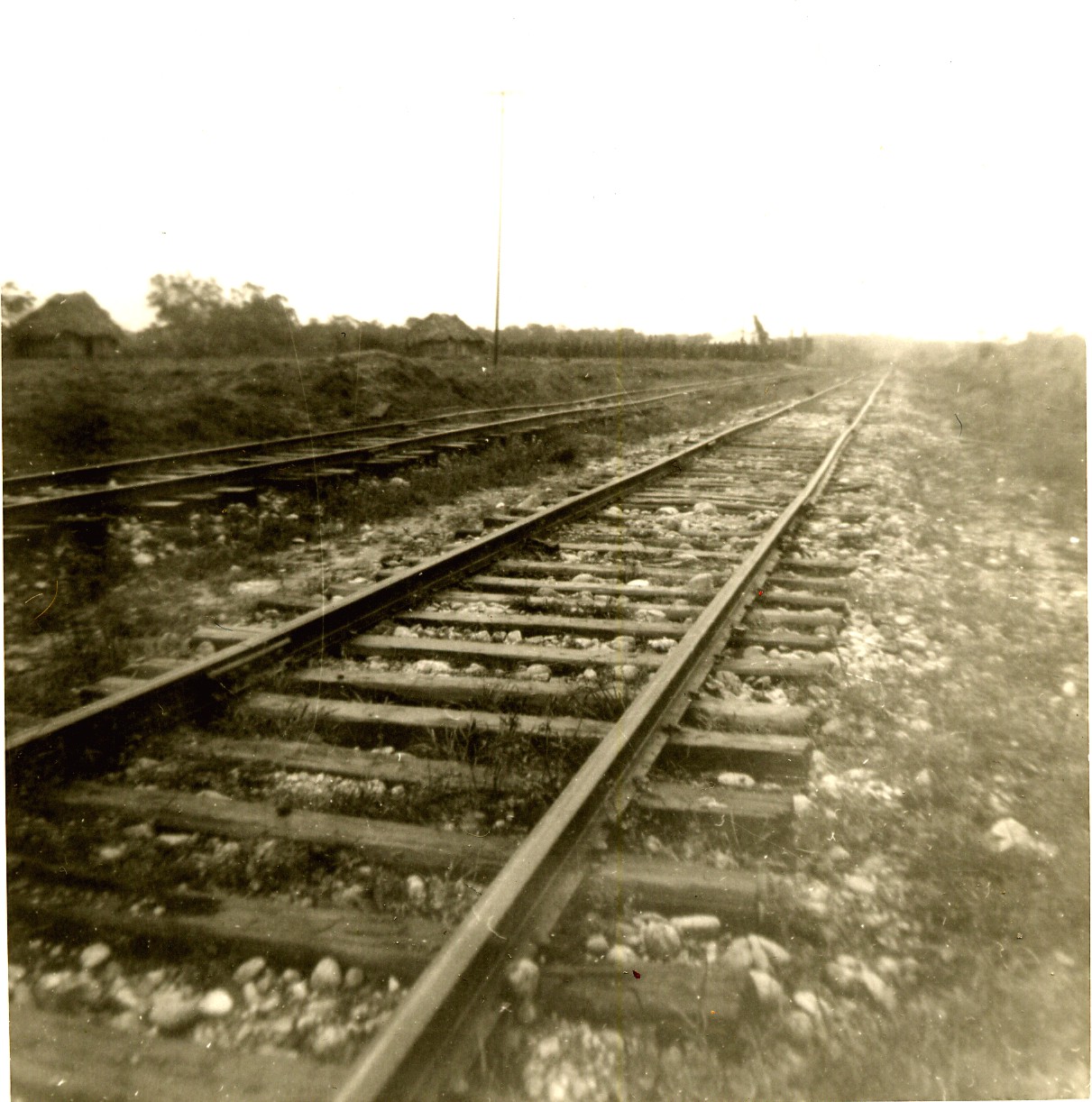 Minerva SystemsDr. Cora Angier Sowa |
CORA SOWA'S RIGHT-OF-WAY:RAILROAD HISTORY OF CORA ANGIER SOWAPage 1 |

My professional experience is in Greek and Latin Classics, history, and archaeology, and in computers (interests that I combine in the field of digital humanities). I am also a lifelong railfan. I grew up in a house above the old Los Angeles Subway tunnel (sometimes called the "Belmont Tunnel") and the Toluca Yards of the Pacific Electric. My father, Robert Angier, was Head Cost Analyst of the Los Angeles Division of the Southern Pacific, my grandfather, Walter Angier and my uncle, Philip Angier, were civil engineers specializing in railway and highway bridges. My great uncle by marriage, the Russian inventor Alexander Lodyguine (better known as the Russian inventor of the light bulb!), supervised the manufacture and installation of cables for the original New York subway system. I now live in Croton-on-Hudson, New York, overlooking the Hudson River and the historic tracks of the former New York Central, now CSX, Metro North and Amtrak.
On pages 1-5 of Cora Sowa's Right-of-Way I display some of my collection of rail photos, with commentary about them, augmented sometimes by period postcards and other illustrations. On pages 6-8 I have put archival material about various family members' contributions to the history of engineering, under the title "Engineers in the Family."
In the photo spread above, I am pictured above next to a locomotive of the Santa Cruz Big Trees & Pacific Railway, with a vignette of an engine of the Roaring Camp & Big Trees Railroad. I was able to visit the cab of the former.
THE RIGHT-OF-WAY
The right-of-way, the stretch of land on which the tracks are laid, is the universe of the train. It is an alternative reality, intersecting but distinct from our usual world of streets and roads. You can go on it if you are on a train, or if you work there, or if you, unseen, trespass. Whether it is the narrow branch or spur disappearing mysteriously between buildings or merging into fields and forests, or the long, straight tangent of the main line, it speaks of something magical, just out of sight. It is the stage, on which an awaited drama will be acted out. It is a space warp, a pointer leading to a place of possibility. An invitation.
To return to the Minerva Systems home page, click here.
You can also contact me at casowa@aol.com.
|
CONTENTS:
|
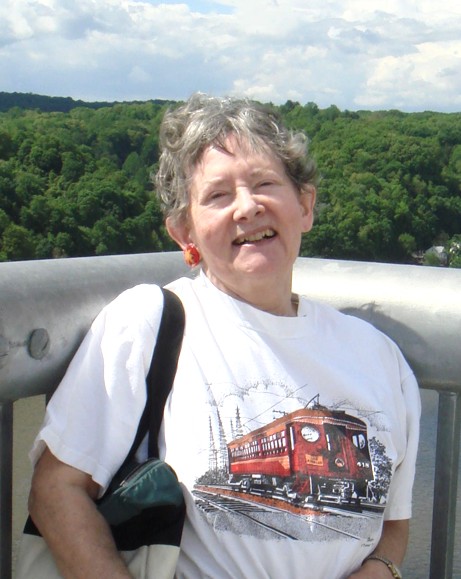 Myself, standing on the Poughkeepsie RR Bridge, wearing a PE "Red Car" T-shirt (2011). |
The Cost Analyst's Daughter
My father, Robert Mitchell Angier, was a cost analyst for the Southern Pacific Railroad during the time I was growing up, eventually becoming Head Cost Analyst of the Los Angeles Division. After the section crew had finished a job, and the inspectors had certified that the work was properly done, he and his co-workers would go out and see how the company had spent its money. He kept his own lists of the going prices of rails, ties, spikes, pipe, and other materials. Sometimes he would save up work for the weekends, and he would take my mother and me out with him and we would make a picnic of it. I became his unofficial helper, learning how to measure switch points (with a tape measure marked in tenths of feet, not inches), count the ties, and note down heat numbers of rails.
Eventually, I had my own pass on SP trains up and down the West Coast (shown below). But I always envied my Dad, whose pass had typed down the side, "Good on freight trains of the Los Angeles Division." His work often required him to visit remote locations, and he could always flag down a train and hitch a ride in the caboose. The position of cost analyst no longer exists. Cabooses no longer exist. The Southern Pacific has also ceased to exist, having been absorbed into the Union Pacific.
Through the 1950's a large part of the Mexican railroads were owned by the Southern Pacific, and Mexican trains still carried passengers. I made many rail vacation trips with my Dad in Mexico, and later in the U.S. Pictures from these travels appear on my Web pages "Rail Travels in Old Mexico" and "More Historic Western Railroad Pictures."
When I was a child, we went every year to the Southern Pacific employees annual picnic. In the early days, it was always held at Sycamore Grove, on North Figueroa, next to the Arroyo Seco Parkway (Pasadena Freeway), before the need for space required a move to a larger venue. There was pink lemonade and games for the kids (that was me in those days). We were entertained, too, by acts like the Raymer Wranglers, a country guitar and banjo group consisting of workmen from Raymer, a now long-gone Southern Pacific station in the San Fernando Valley.
My father was also a writer and poet, and published two books. One was Why Poetry, illustrated with his own poems, many of which were either about the working man's life or about long distance running, which was one of his passions. He and my mother were both marathon runners. The other book was called Epiology. It was a slightly fictionalized autobiography (some events that occurred multiple times were collapsed into one, and the names are fictitious), which he published under the pseudonym Frank Lee Tolde.
Presentation to the National Railway Historical Society and the New York Railroad Enthusiasts
Some of the images on these pages were shown in a presentation to the New York chapter of the National Railway Historical Society in April, 2010 and in another show for the New York Railroad Enthusiasts in June, 2011. If this were a movie, it would be the "director's cut," in which I have added more pictures and commentary, as well as "special features."
From the Archives |

The map below, adapted from the Metrolink system map, indicates the places depicted in the photos of Southern California that follow.

On and Around the Southern Pacific |

The Southern Pacific "Malley Compound" locomotive
I have vivid memories of the big Southern Pacific cab-ahead locomotives. (I am pictured as a child in front of one in the photo above.) The term used on the railroad was "Mallet" or "Malley compound," although in the 1940's none of them were compound engines, being properly called "articulated consolidated" or "AC," with two big sets of drive wheels, hinged in the middle. They were built to go through the mountains, and my main memory of them, as a kid standing with my parents beside the tracks, was their mind-blowingly LOUD whistle. It would take your head off. Classic Trains for Fall 2009 had a great cover story (actually several stories) about the Malleys, including one incident in which a young fireman was crawling along the side of the engine on a moving train to check the water pressure in the tender when the engineer accidentally let loose "a long loud blast" of the whistle, causing the fireman to almost fall off. Yeah, that's what it was like!
Only one of these wonderful behemoths survives, in the California State Railroad Museum. It is pictured below, both outsides and insides. In the following set of pictures is a photo of a Malley in action, taken in 1918 by my father, shortly after he moved to California from Chicago.


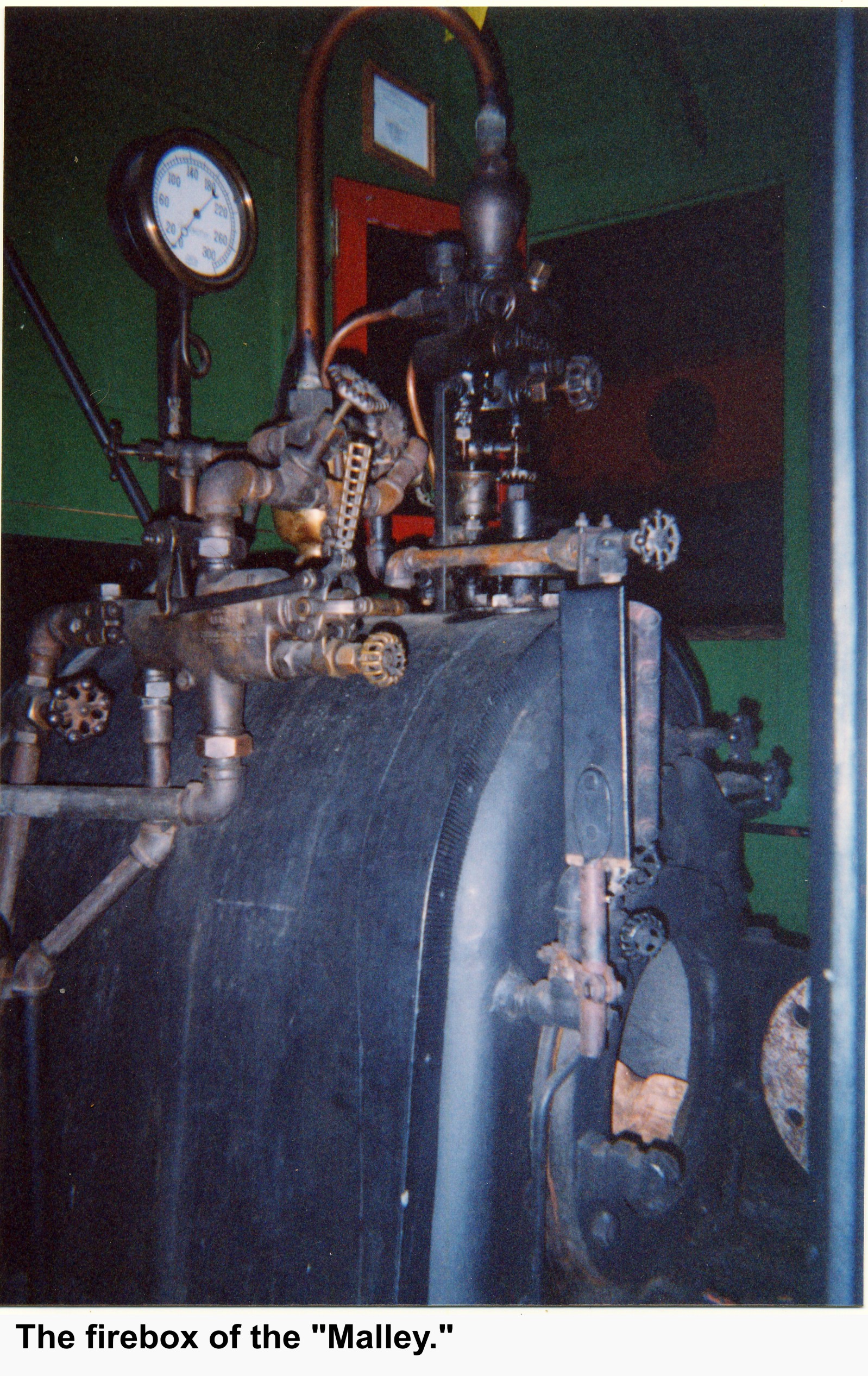

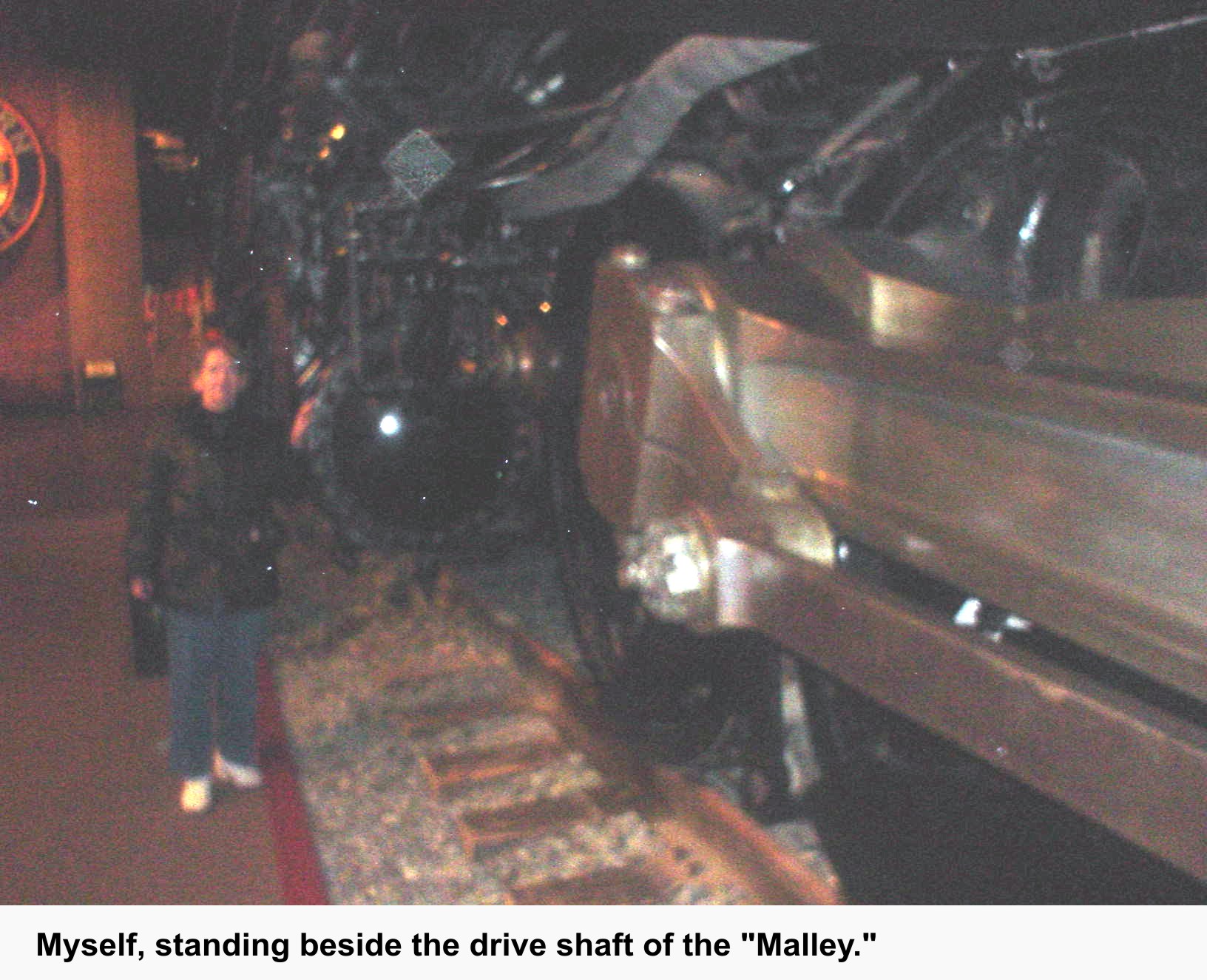
The pictures below were taken by my father and grandfather early in the 20th century, including a photo of a "Malley" cab-ahead in its native habitat, the mountains of California; Santa Fe 2-8-8-0 articulated locomotive #3299 built from two 2-8-0's; and Union Pacific 4-8-2 "Mountain" type locomotive #7856 in the yards in Los Angeles. In the mountains at Tehachapi




The Alaskan Railroad |

Walter Angier in Alaska
My grandfather, Walter Eugene Angier, about whom there is more in the page "Engineers in the Family I" on this Web site, died before I was born (he lived from 1863-1928), but he left a rich legacy of bridge design which I have been exploring. This included work on both of the bridges at Poughkeepsie (of which there are a number of pictures, past and present, on another page of this site). He was sent in 1919 by his partner Ralph Modjeski (the firm was Modjeski and Angier) to oversee a study to estimate the stress of ice breakup on a railroad bridge being constructed in Alaska. A few train pictures from the Alaska trip appear below, including a narrow gauge locomotive at Fairbanks and a motor car (literally, a Model T body — or something like it — on flanged wheels) of the Copper River and Northwestern Railway. More Alaska pictures appear on the first "Engineers in the Family" page.






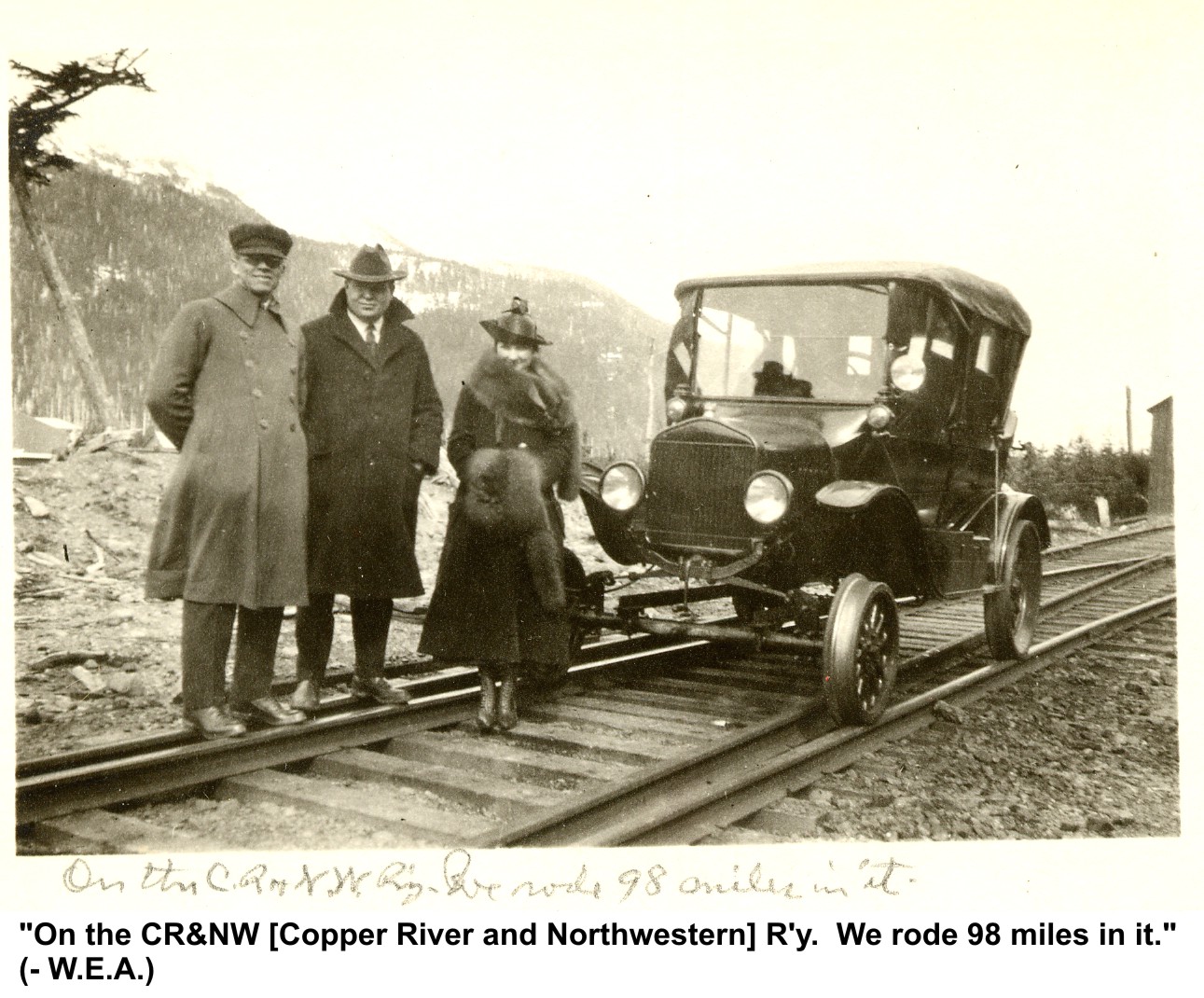
The Southern Pacific Coast Line and Ojai Branch |

The pictures below were taken on a job done by my Dad and his official crew on the Southern Pacific Coast Line near Chatsworth and on the railroad's Ojai Branch in 1953. The Ojai Branch ran from Ventura, on the coast, north to Ojai, deep in Ventura County. It was abandoned in 1969, and parts of it are now a bike trail called the Ojai Valley Trail" or the "Ventura River Trail".



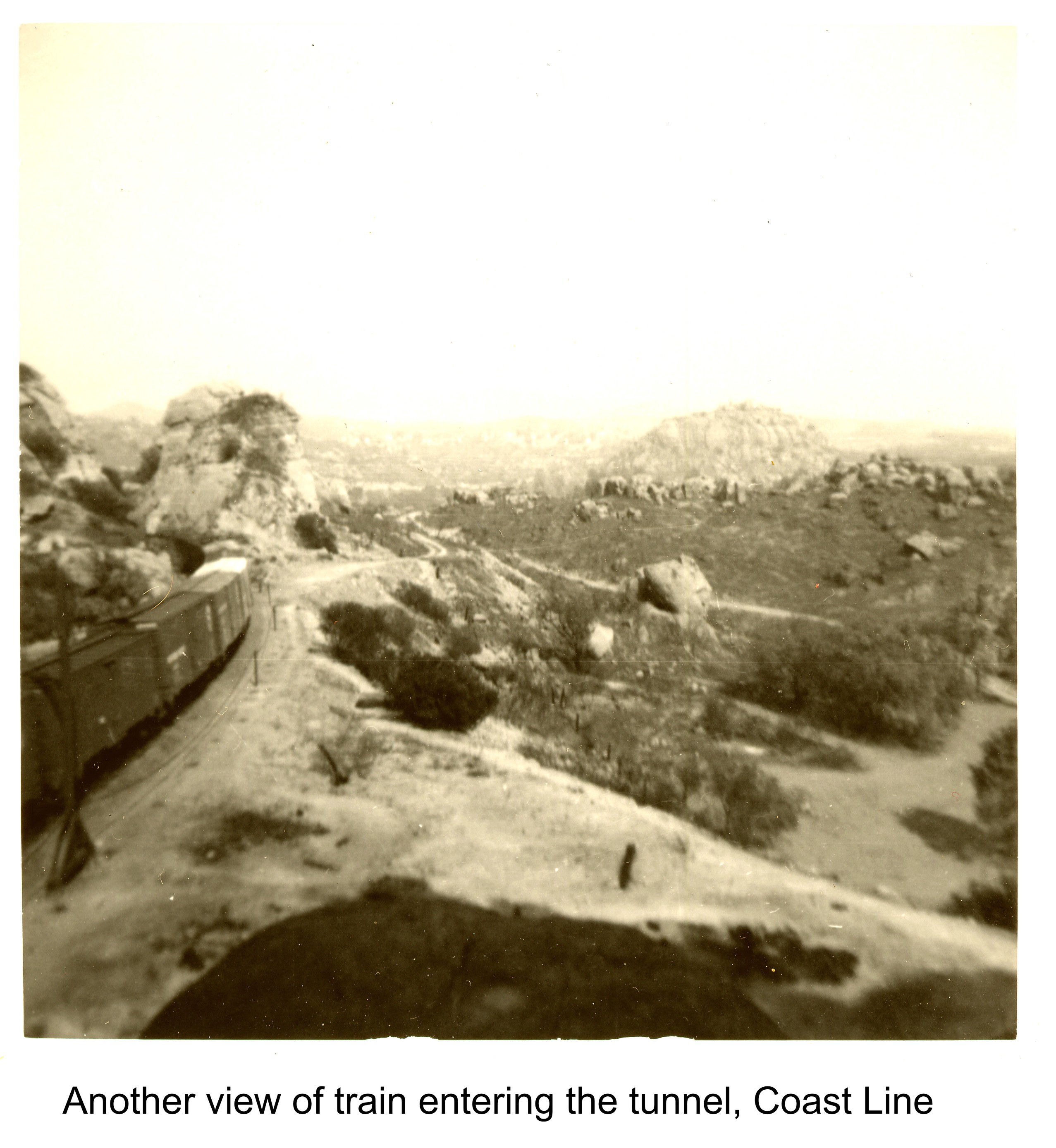











Up and down the coast and into the mountains
The pictures below I took going up the coast from Ventura into Santa Barbara County to Surf, which had a nice cozy station with a potbelly stove. Alas, now there is only a shelter that looks like a bus stop for Amtrak passengers at Surf/Lompoc (shown in an image from the Internet for comparison).
The magazine advertisement shows the Southern Pacific "Lark" train as it used to look going through the live oak-dotted mountains of Santa Susana Pass. Also below are pictures from the train in Cajon Pass and the old wagon "notch" above Newhall ("Beale's Cut") seen in many silent movies. Also, from the early 20th century, the Santa Fe station at Barstow (now restored) and temporary tracks laid in the Arroyo Seco streambed during quarrying operations for building the breakwater at the Los Angeles Harbor.





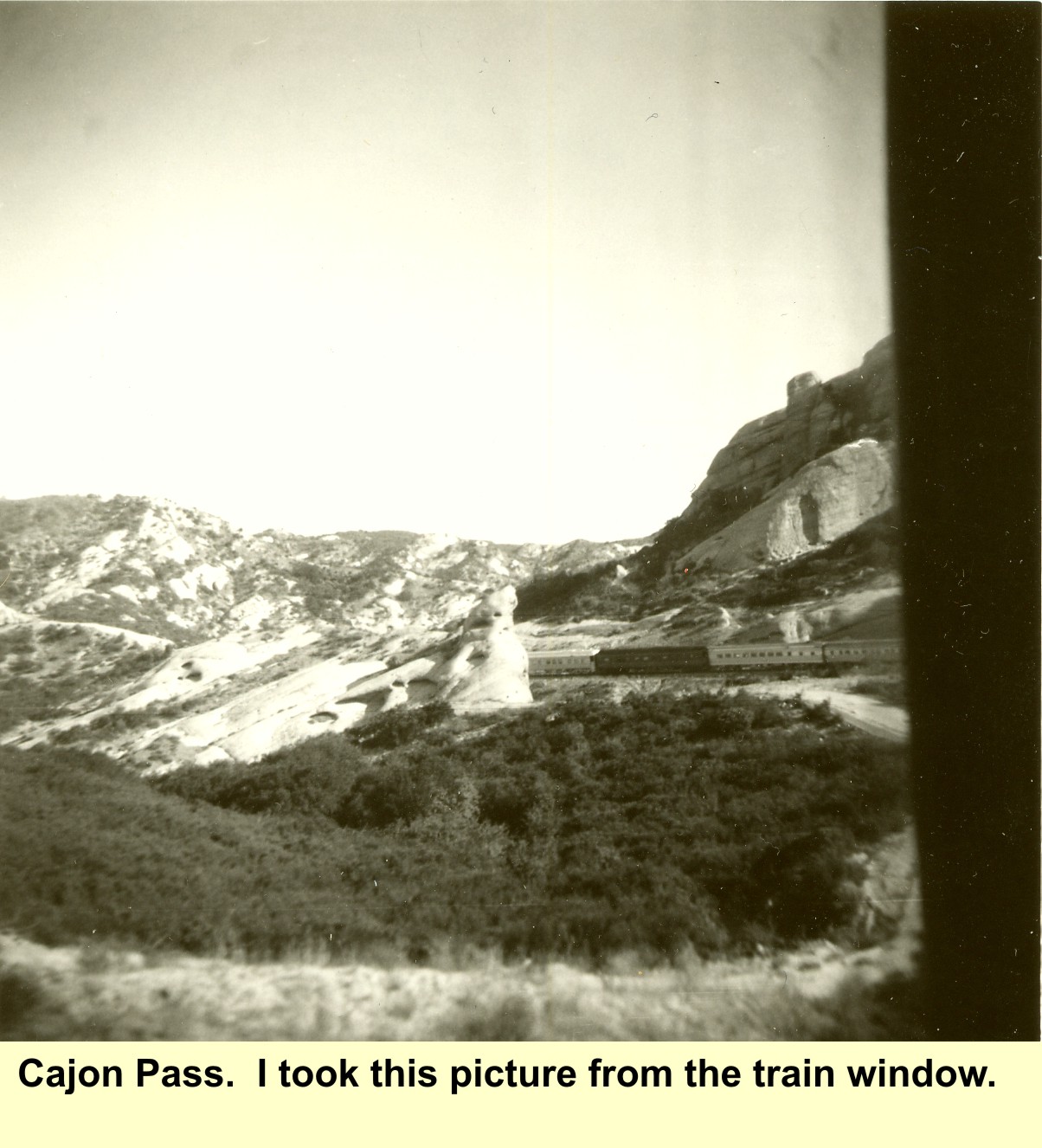
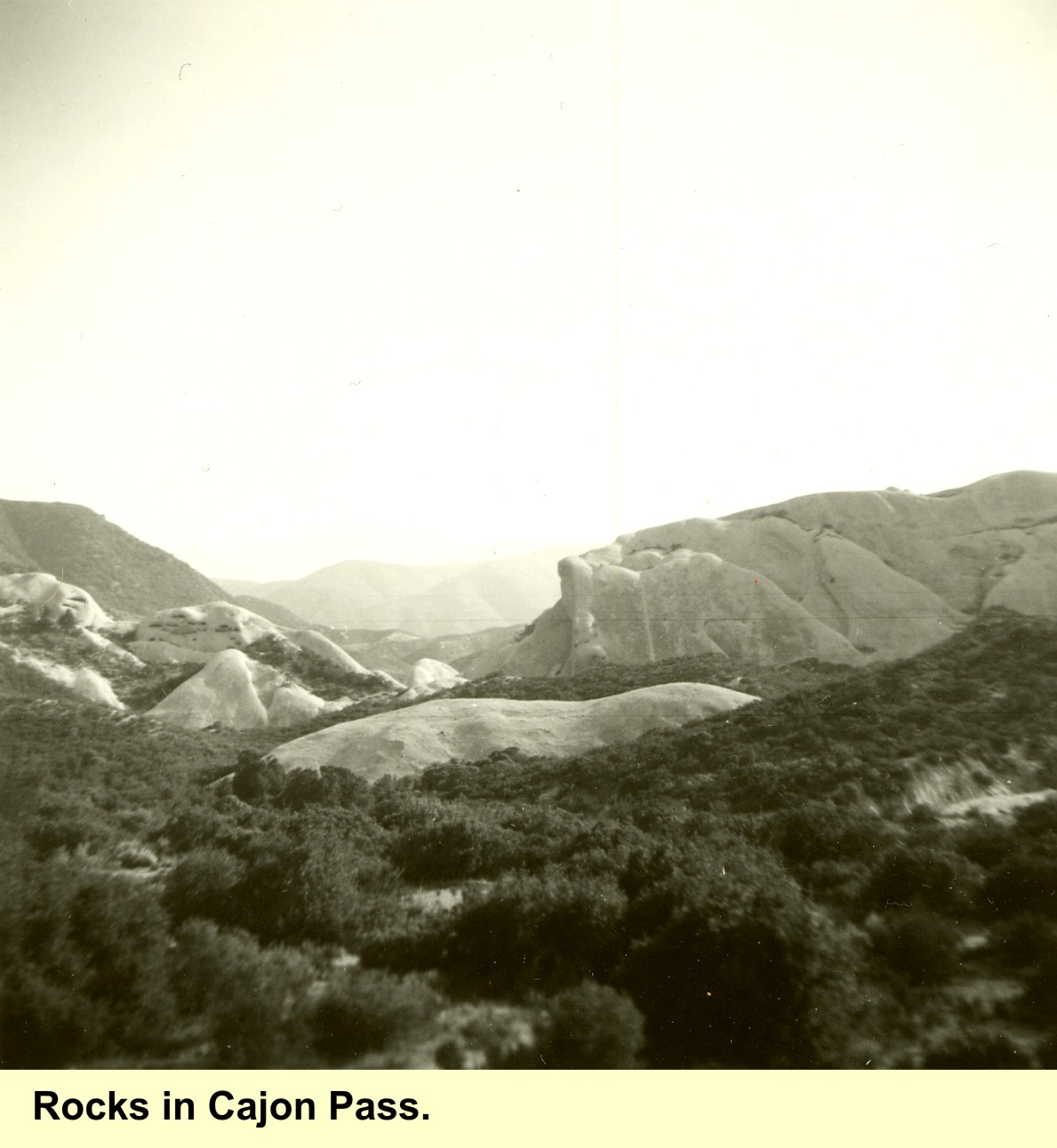


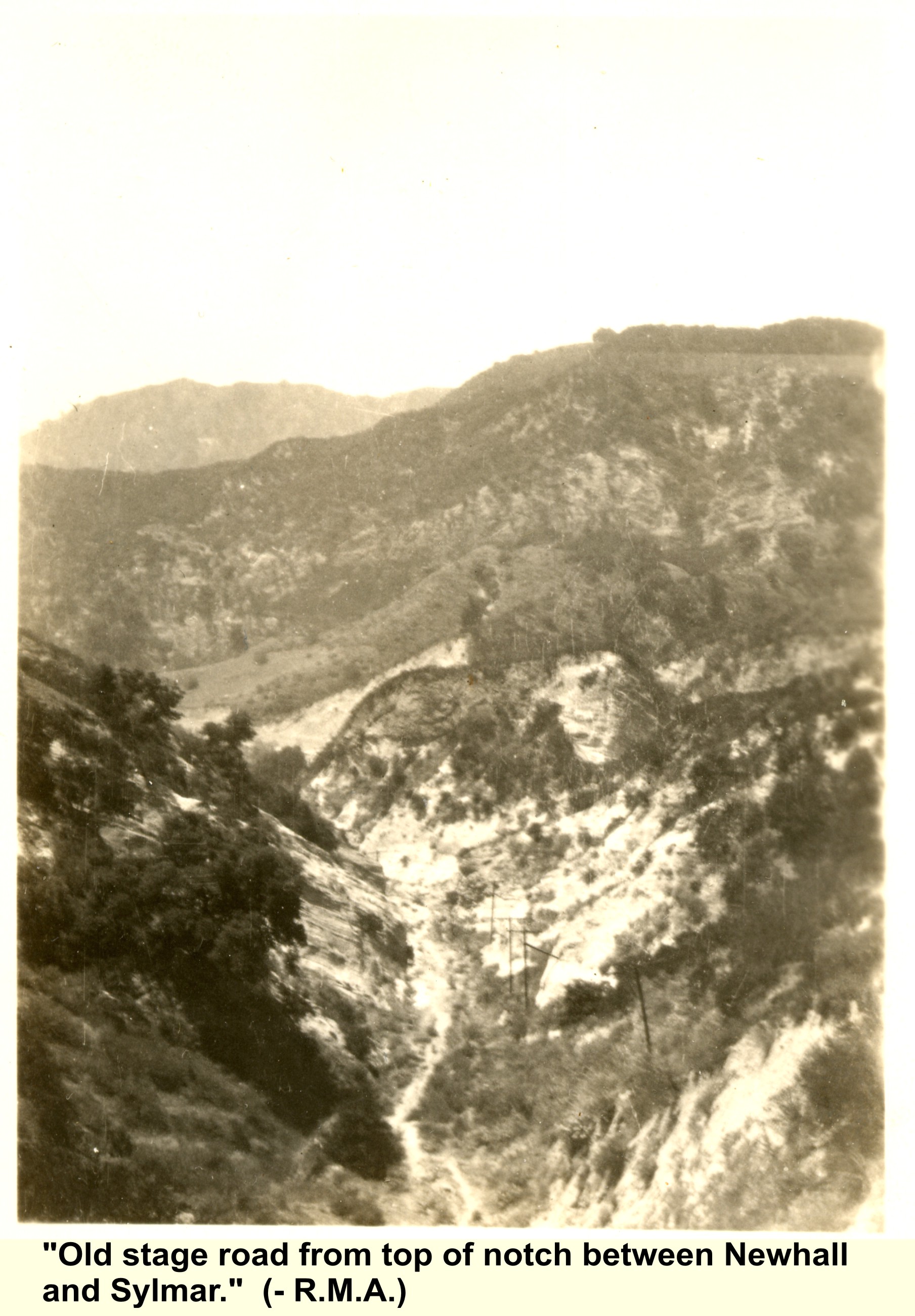

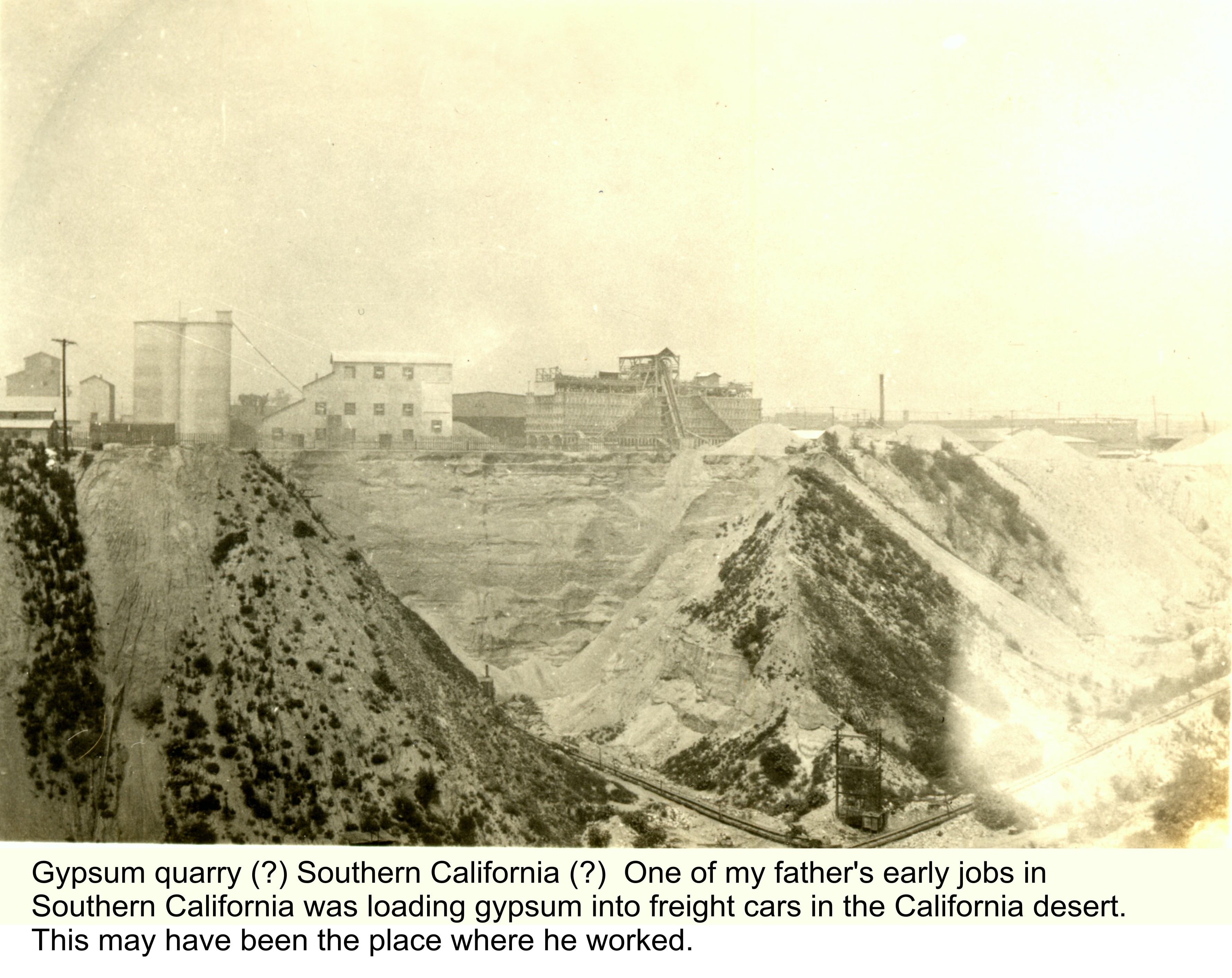
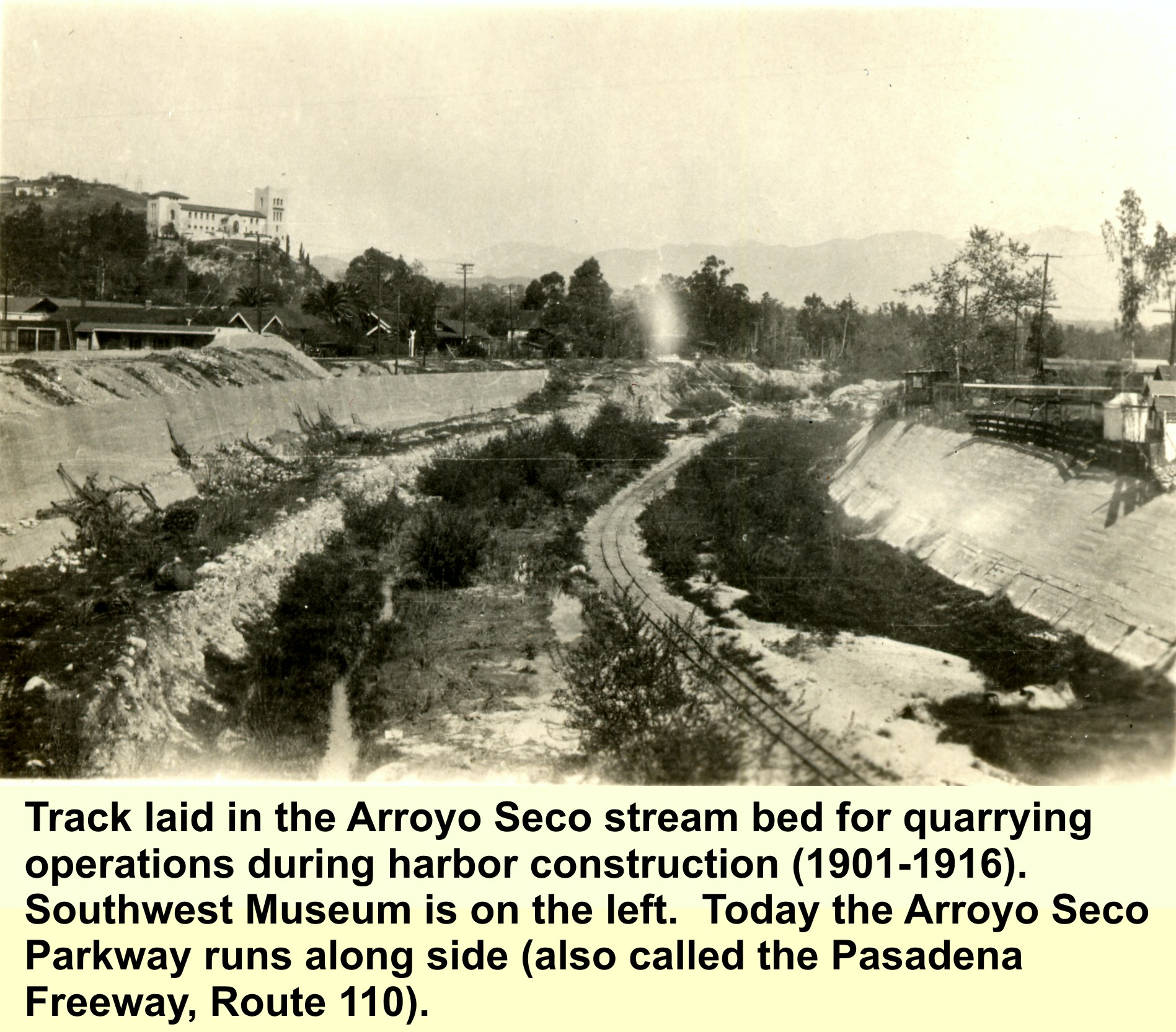
When I was old enough, I had my own pass on Southern Pacific trains of the Los Angeles Division and all up the West Coast. But I envied my father, whose pass had typed along the side, "Good on freight trains of the Los Angeles Division." When I got a Fulbright Scholarship to Greece, I merited a notice in the S.P. employee bulletin. My own passes and my press notice appear below (with the name of the scholarship misspelled "Fullbright"!). Note that I am identified as a student at "Radcliffe." When I began graduate work at Harvard, it was officially men-only, and women were required to enroll at Radcliffe, the affiliated women's college. My own rail pass on the S.P.

The Old Los Angeles Subway Tunnel ("Belmont Tunnel") and Toluca Yards |

Growing up over the Los Angeles Subway Tunnel
My house over the tunnel
I grew up in a house directly over the old Pacific Electric Subway tunnel on Crown Hill in Los Angeles (sometimes referred to today as the "Belmont Tunnel.") We looked down at the Toluca Yards and the substation, and I used to play on the slope above the tunnel portal. Extending out from our house over the tunnel entrance was a big flat place, landfill from the building of the tunnel in 1927. We used this area as an extension of our yard. Our house, which was built long before the tunnel, originally hung out over a little valley, and the landfill from the tunnel was heaped up next to, around, and under it. (We knew the difference in feeling between when a streetcar passed beneath — the house bounced up and down — and when there was an earthquake — the ground went round and round.)
Streetcars coming out of the tunnel went out Glendale Boulevard, diverging at Sunset Boulevard for either Hollywood or Glendale and Burbank. A freight line on Second Street used to join the tracks on Glendale (see below). Temple Hill, across from our hill, also once had more streetcars on it, when it was a development called Angeleno Heights. I remember seeing some of the old tracks still embedded in the streets. (Thanks to an organization called Angeleno Heights Trolley Line some of these lines may be revived.) Before it had houses, Temple Hill was an oil field, and some of my neighbors still had oil wells in their back yards. (Now, when new buildings are built, they suddenly find they have a methane problem!) Wells were operated from central pumping houses, several wells to a pumping house, by cables that sometimes stretched for blocks; the cables and wells made a gentle creaking sound. One very old well had as a counterweight a box of rocks!
The day the substation blew up
I was witness to two horrific accidents involving the P.E. When I was very little, there were still freight trolley cars on Second Street. One day, we heard a crash, and learned that someone had left a switch open, and a freight car had smashed into the side of a passenger car on Glendale Boulevard. I don't know if anyone was killed, but the side of the passenger car was completely stove in. Freight service (indeed, any service) never ran on Second Street again.
The other accident involved the substation. My Mom and I were in the house, and heard a big explosion. We ran out in time to see chunks of concrete and metal shooting fifty feet up in the air from the roof of the substation, tearing out one of the rooftop ventilators. A temporary substation, housed in a freight car, was brought in and parked on a little siding carved out of the hillside beside the main track. When the substation was repaired, a new ventilator was mounted on the roof. In the pictures below, you can see the shiny ventilator.
Then and now
The last streetcar ran through the tunnel in 1955, bearing a banner saying "To Oblivion." For decades, the site (and the entire neighborhood) was a weed-overgrown, graffiti-covered ruin, as houses were demolished and developers wrangled with the city over how the site was to be developed. The substation was used as a location for films, including the sci-fi miniseries "V." The city used the tunnel and right-of-way for car auctions. Various uses for the tunnel were proposed, including a nightclub or a mushroom farm. The neighborhood became crime and drug ridden. Finally, by 2007, the entire hillside, including the place where my house used to be, was "redeveloped," with giant apartment houses, a new high school, and an enormous athletic field. More apartment houses were built across the old right-of-way, thwarting any hope that the old route could be revived for transit.
The blocked-up portal and the substation are all that remain today of the old subway, down in a sunken garden accessible only from the apartment houses. A realistic mural of a streetcar is painted on the tunnel entrance, about to leave on realistic ties and tracks. When the modern L.A. subway was built, the old tunnel could not be reused because the foundations of new downtown buildings were sunk through it. Some of the old Red Cars survive at the Orange Empire Railway Museum, as shown on the following page.
Below are a selection of pictures showing the subway and the neighborhood, then and now, with the car yards sometimes serving as backdrop to portraits of myself and my Mom, Christine Angier, and some of our cats.


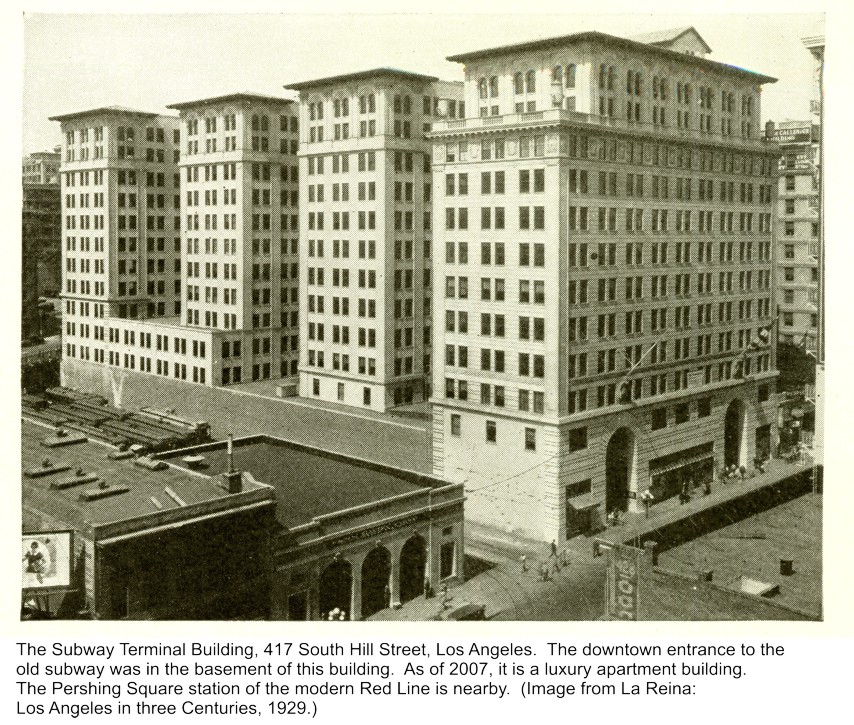










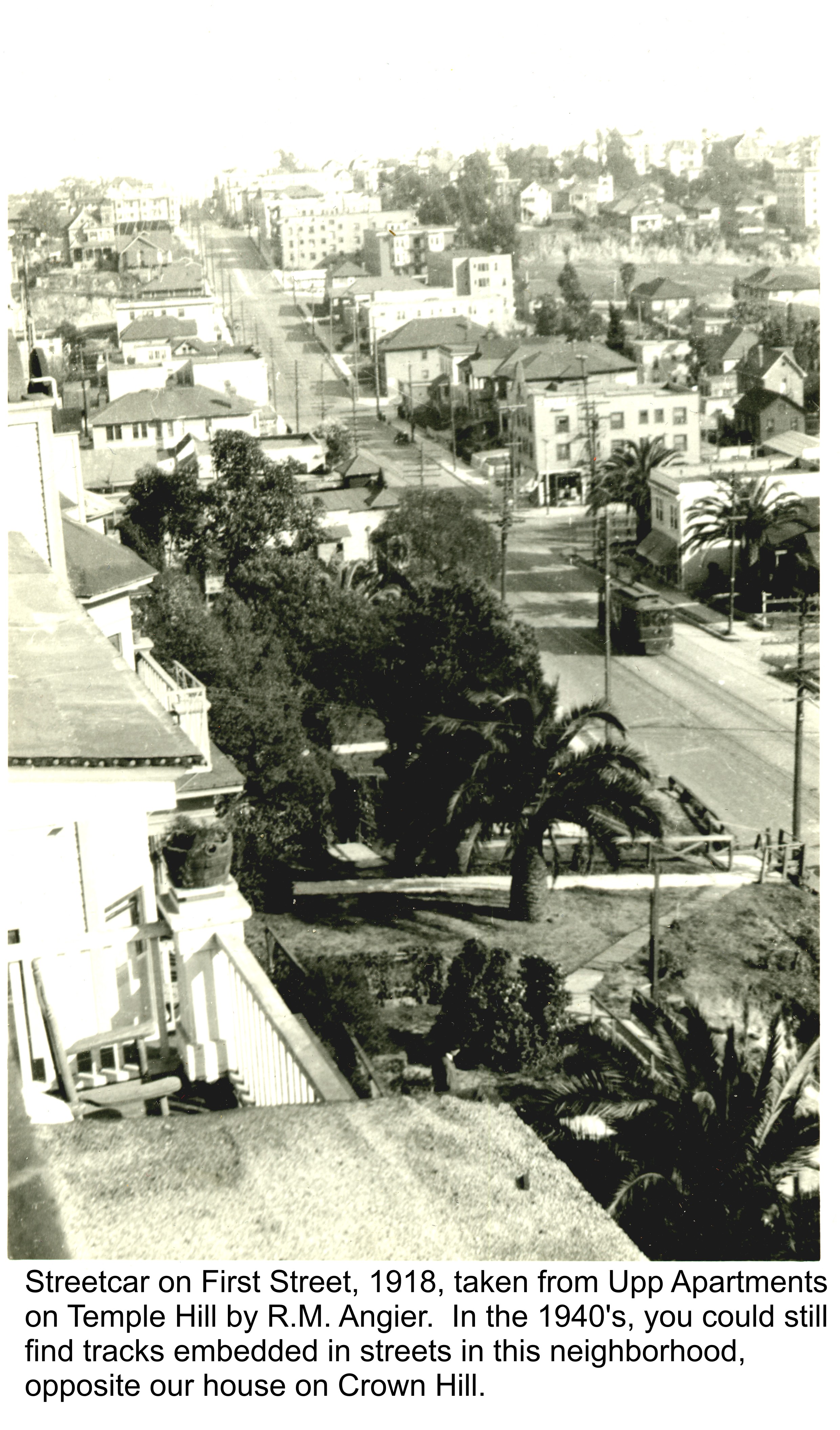


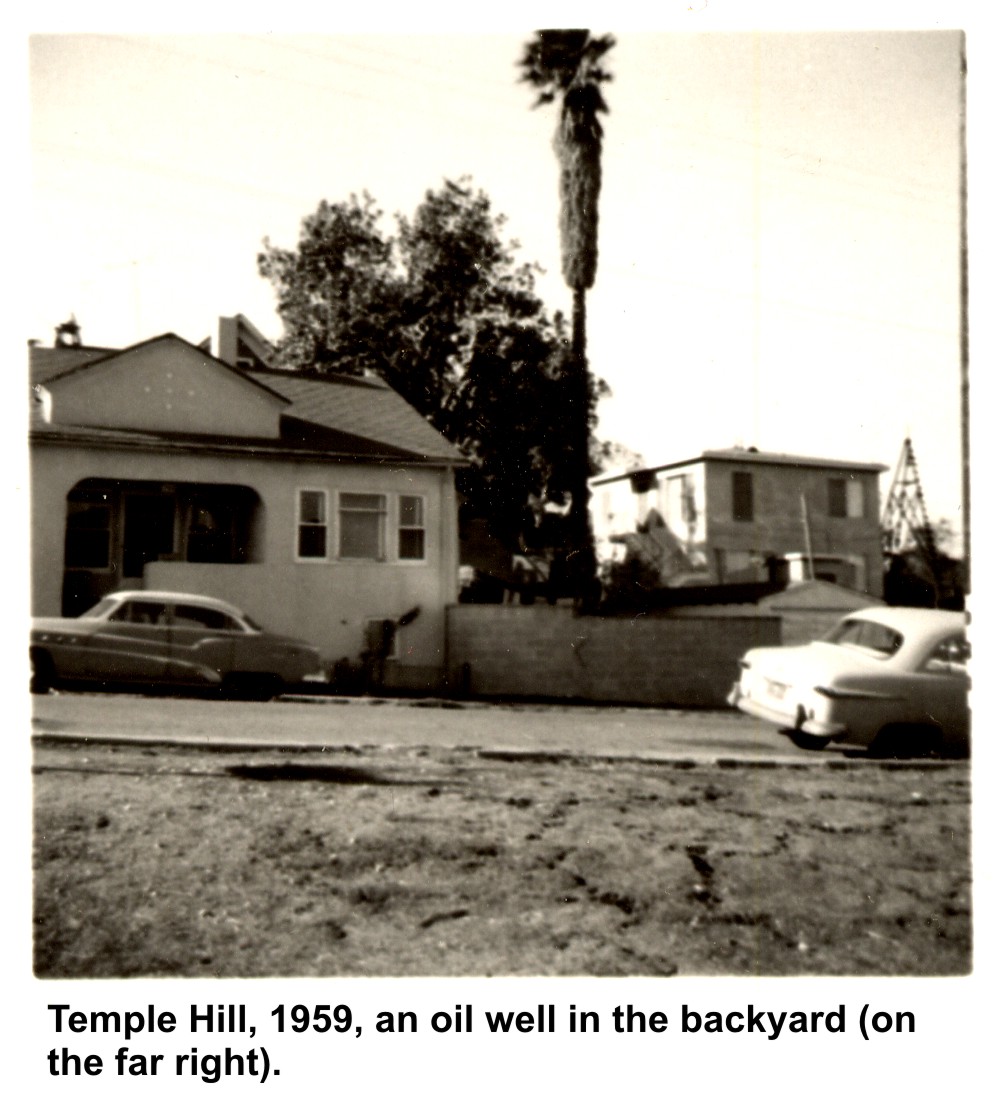






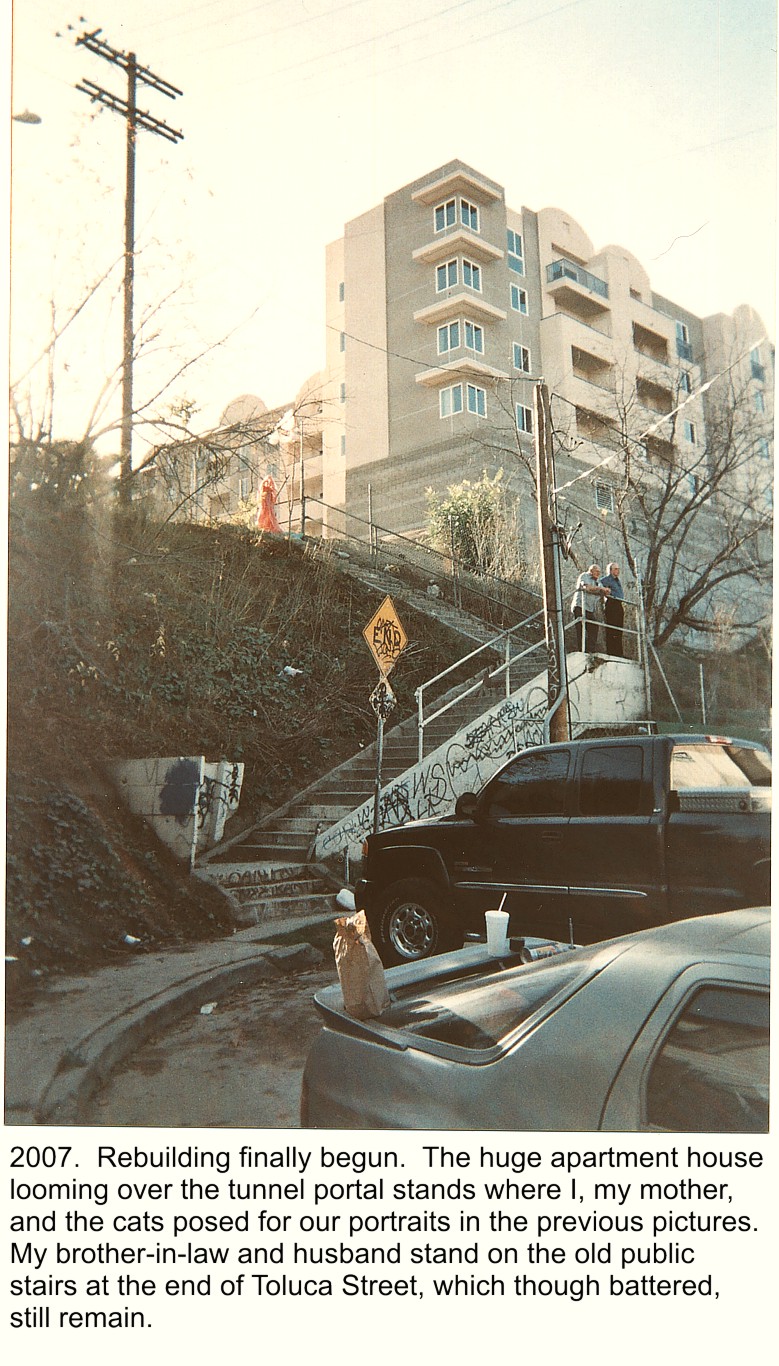

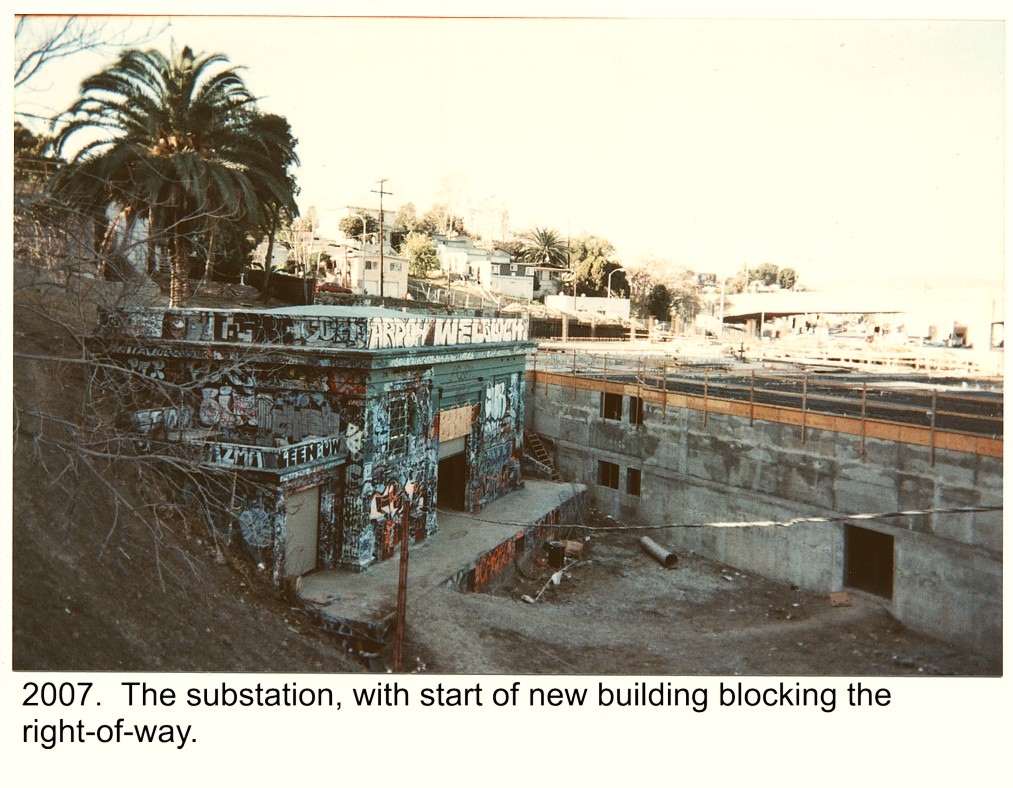
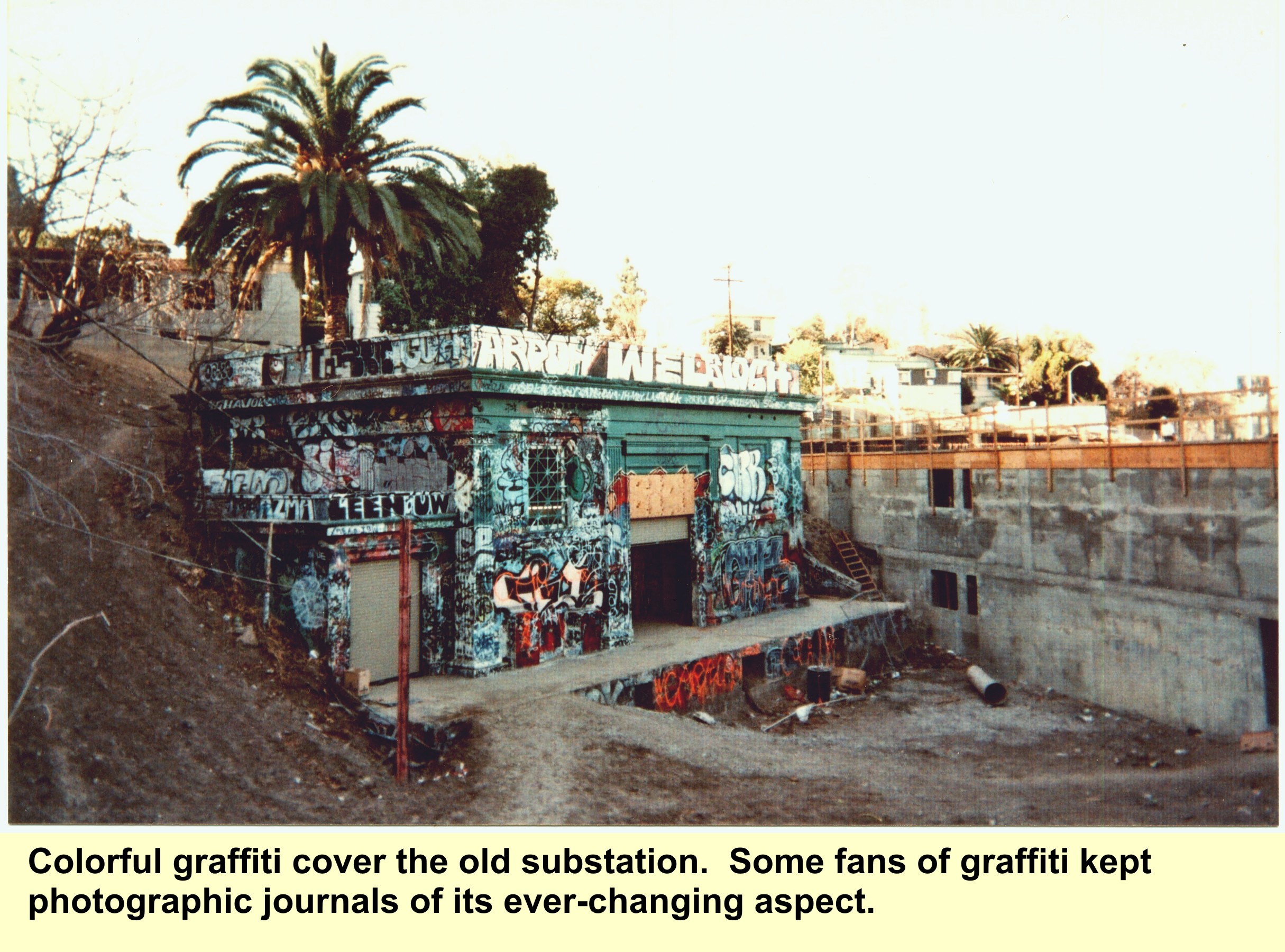

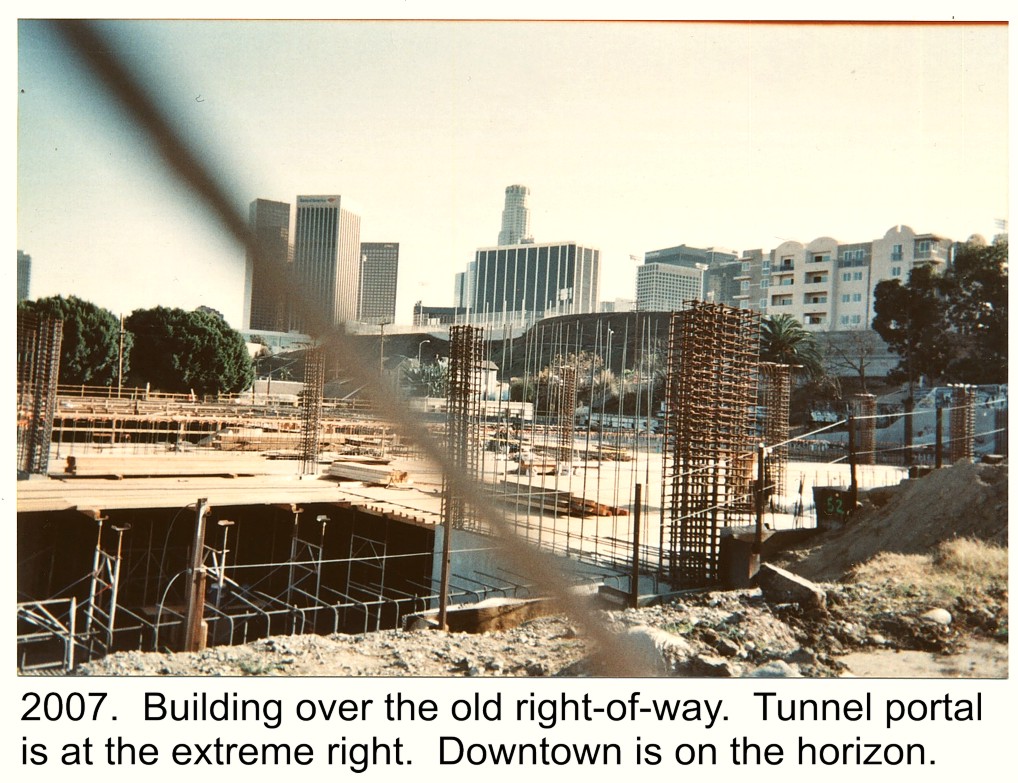


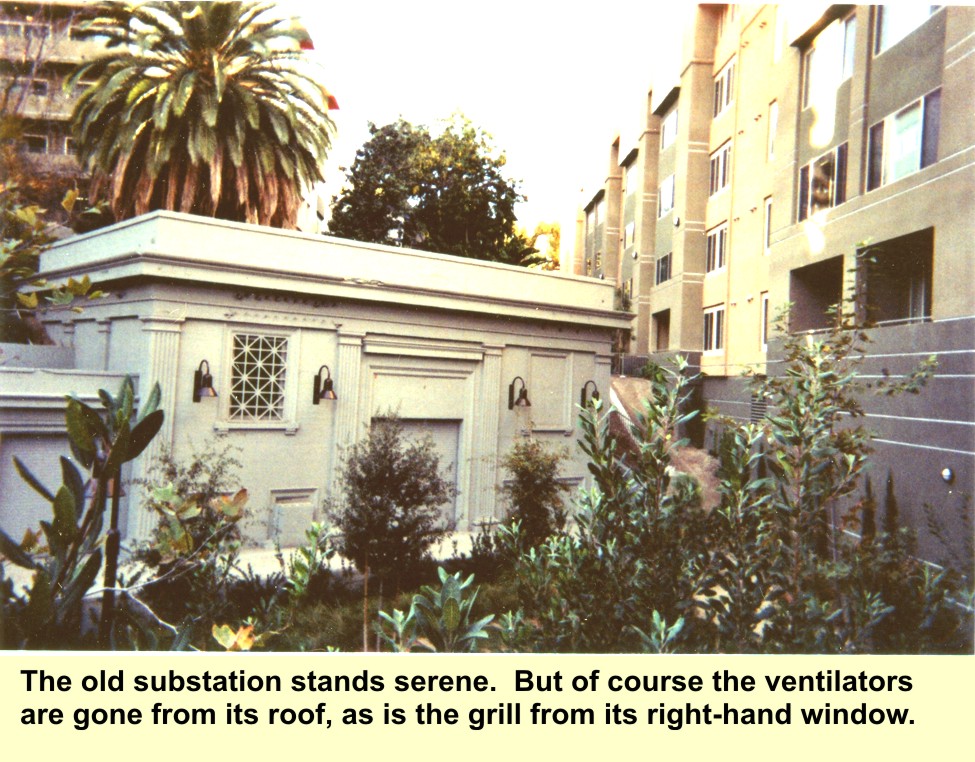
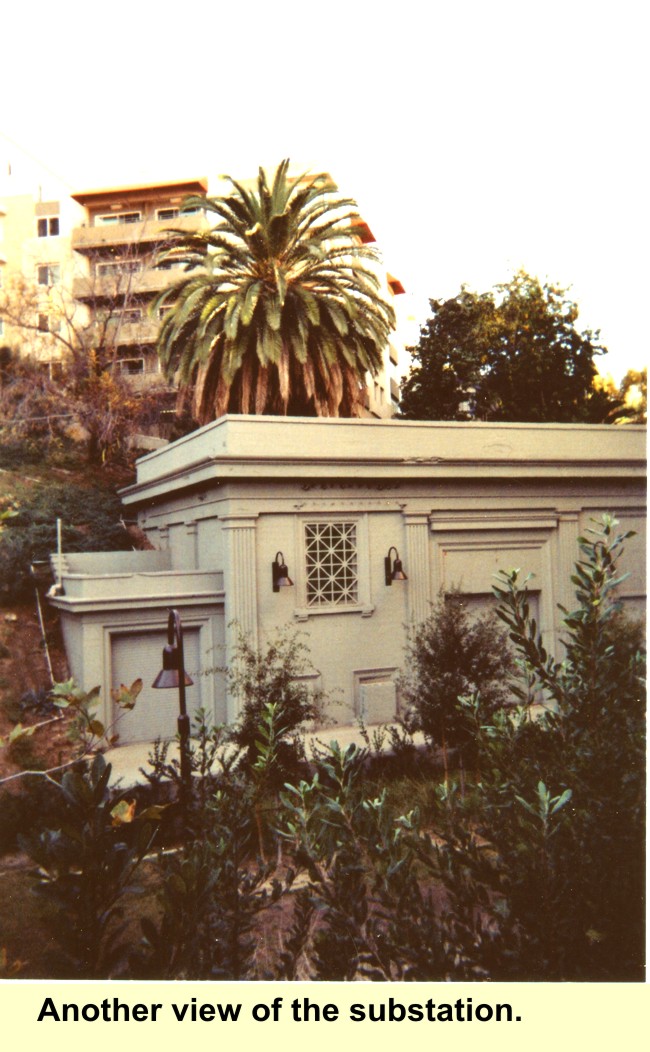
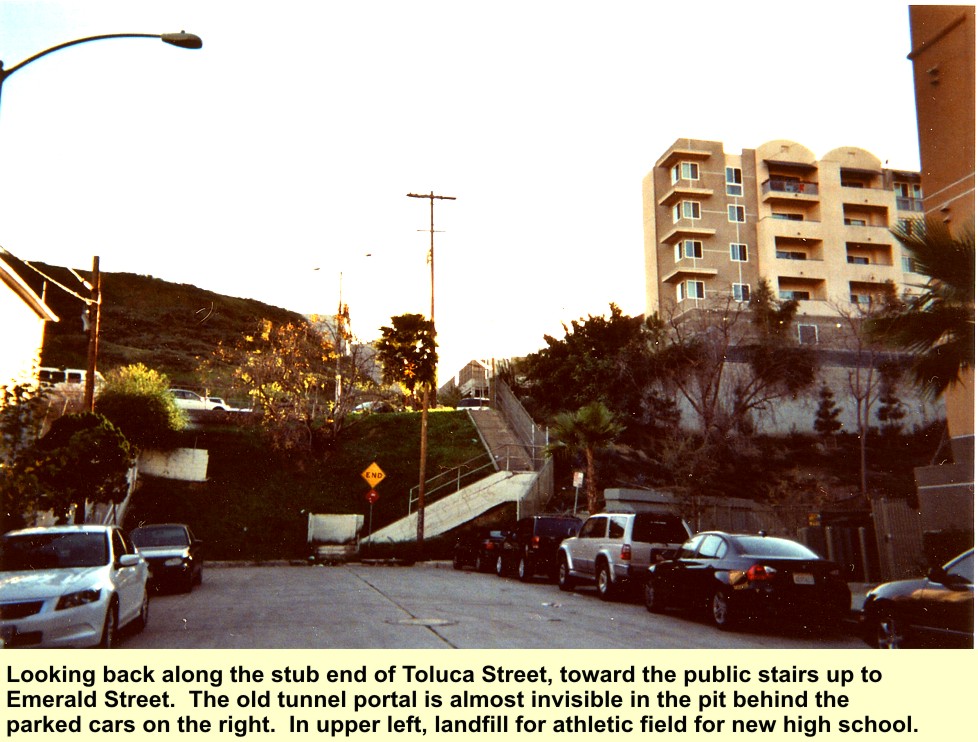


Union Station, Plaza, and Angels' Flight |
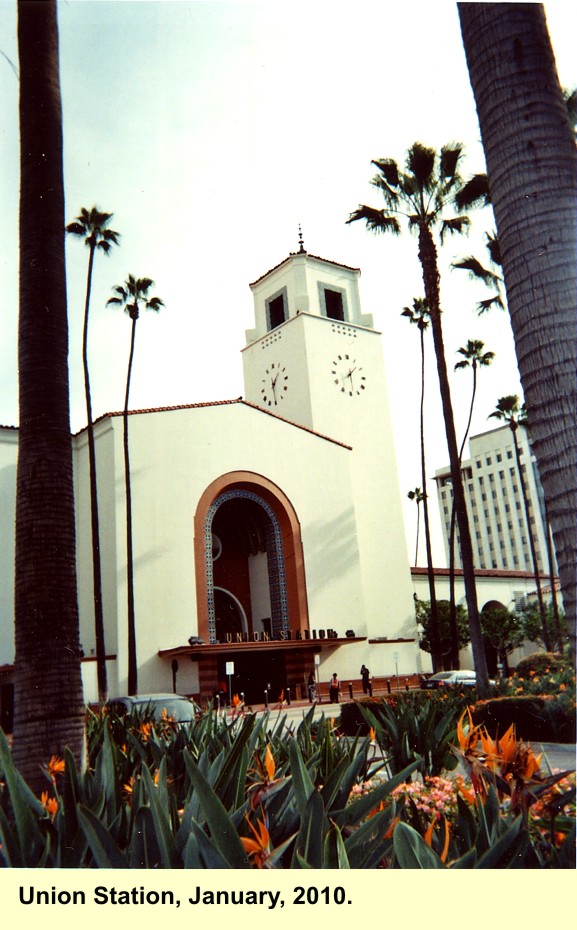
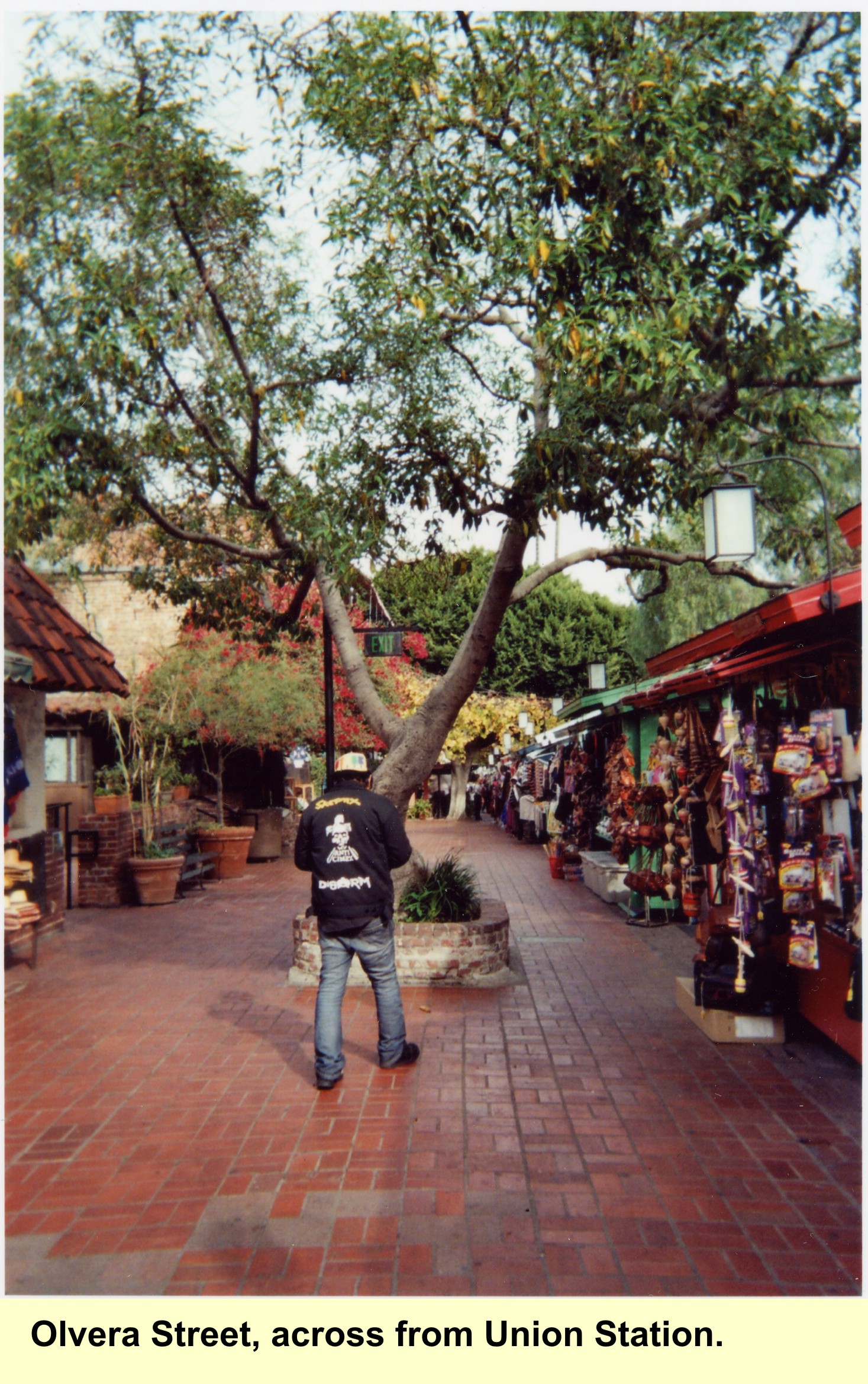
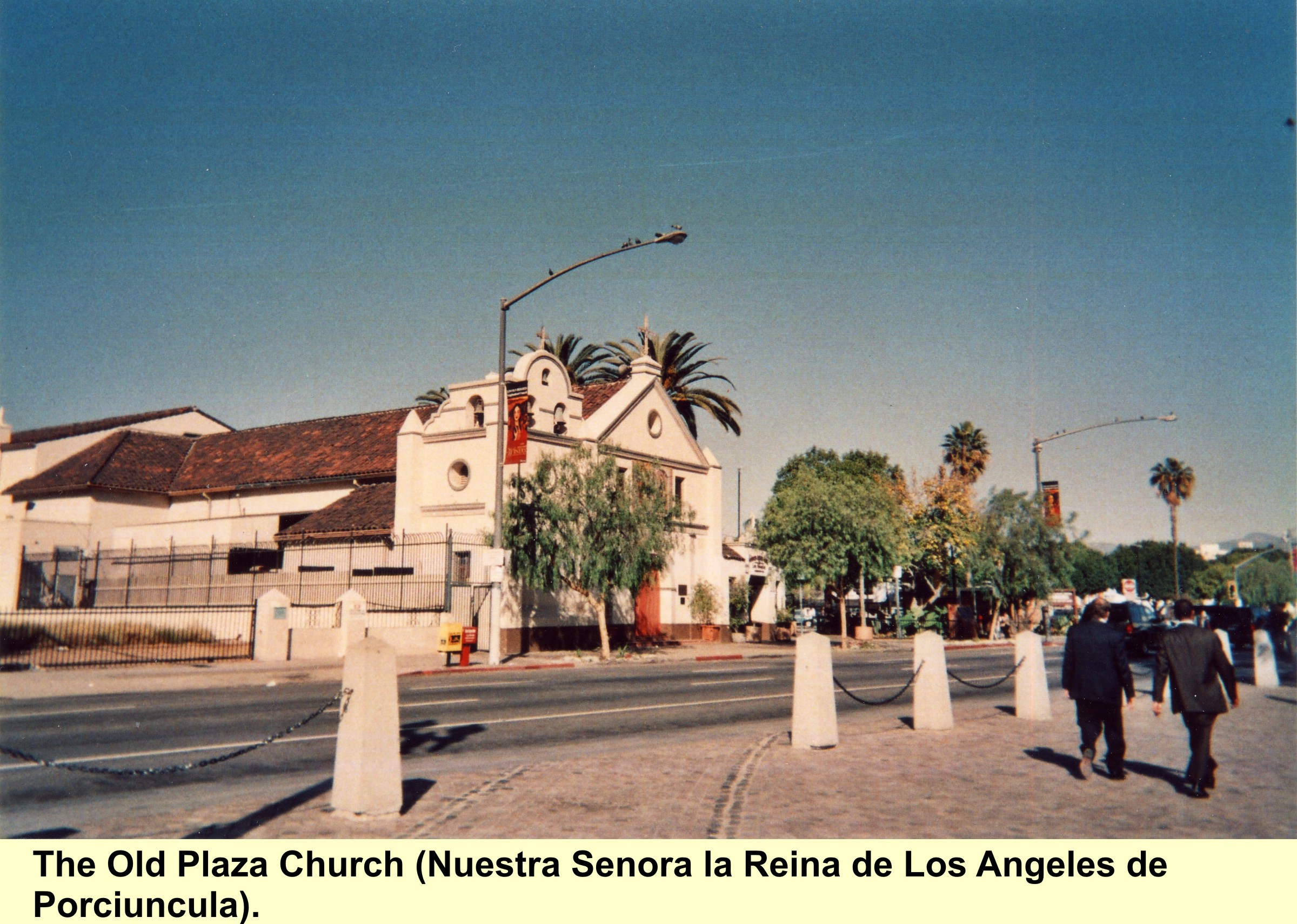



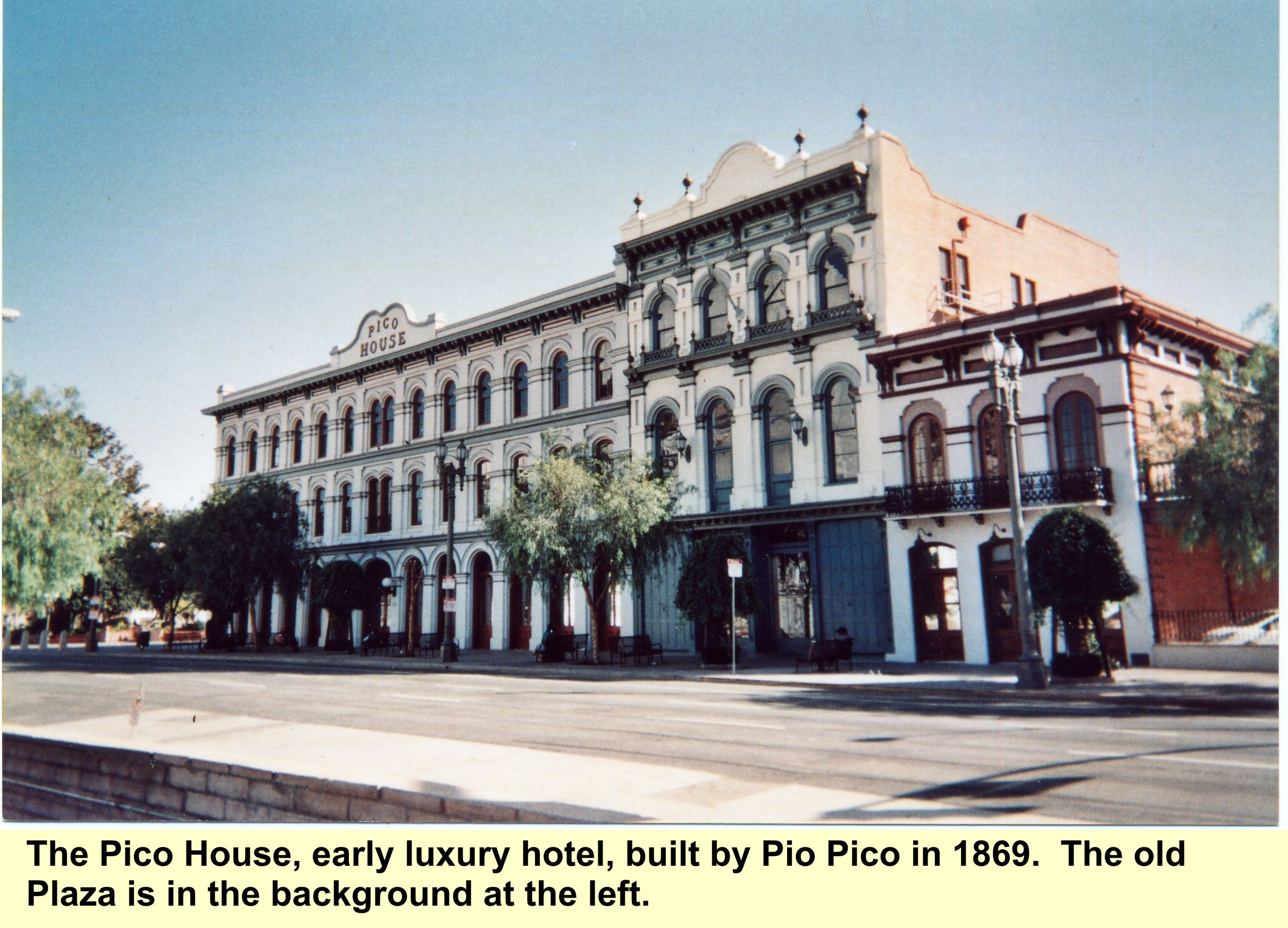

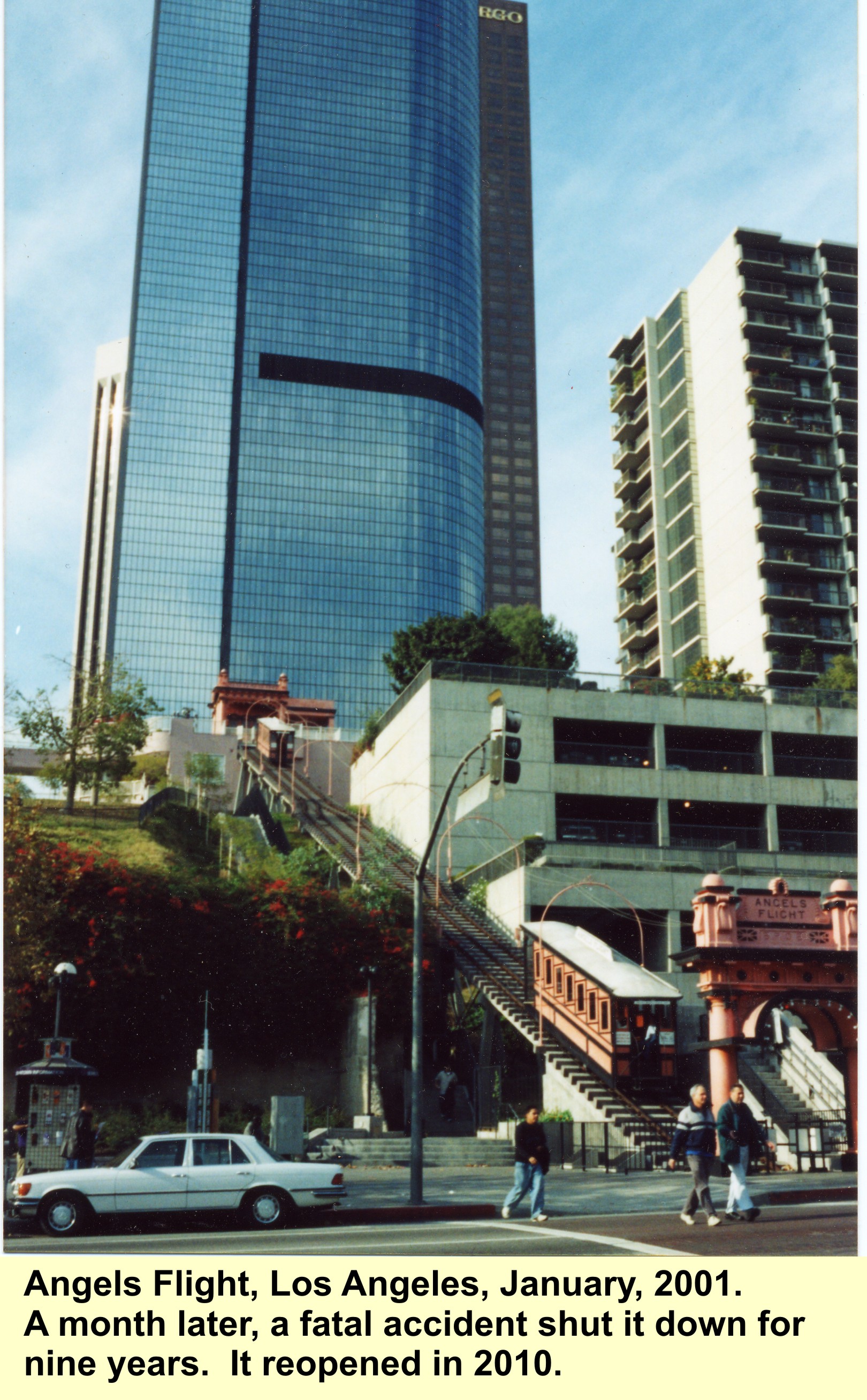
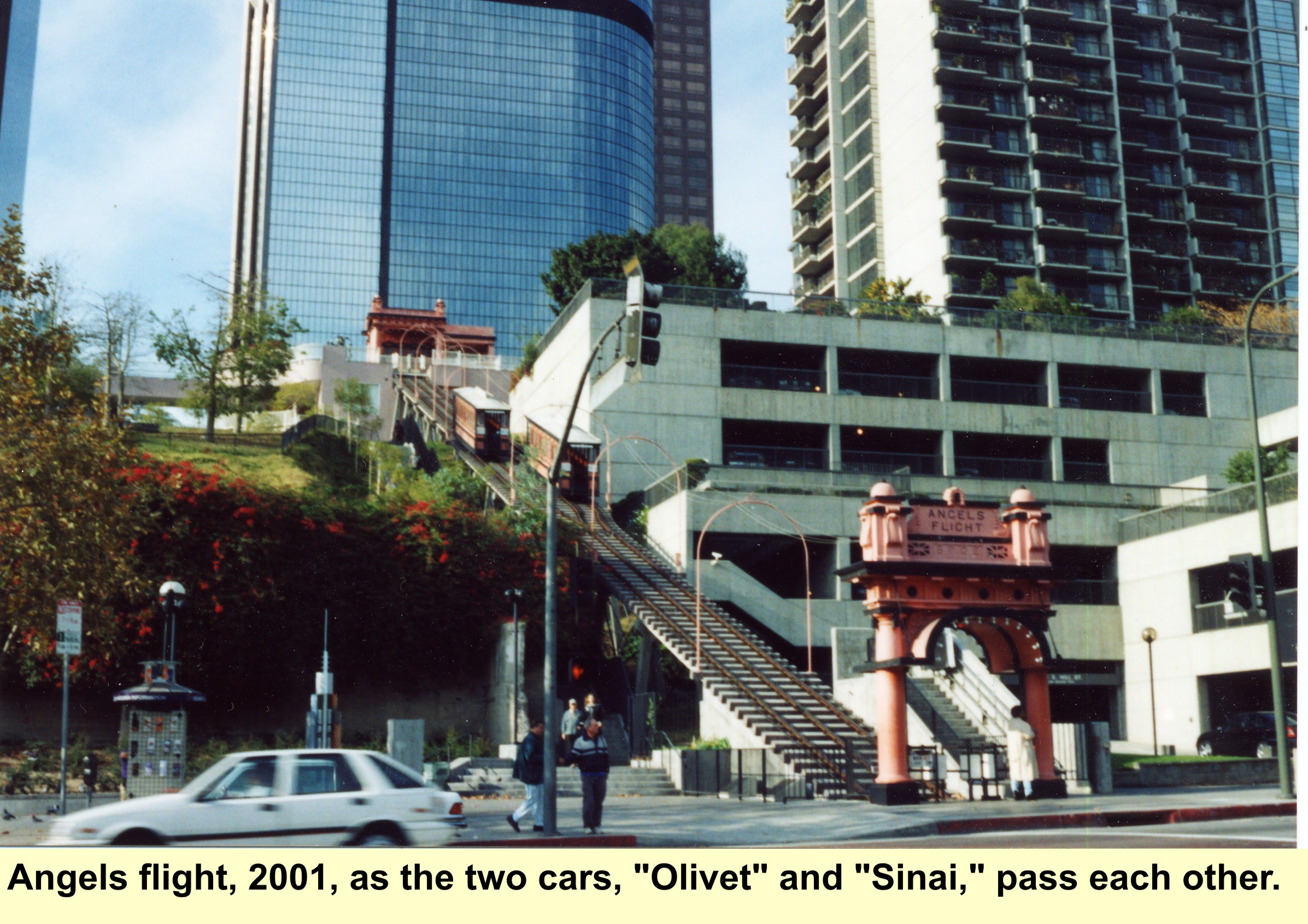
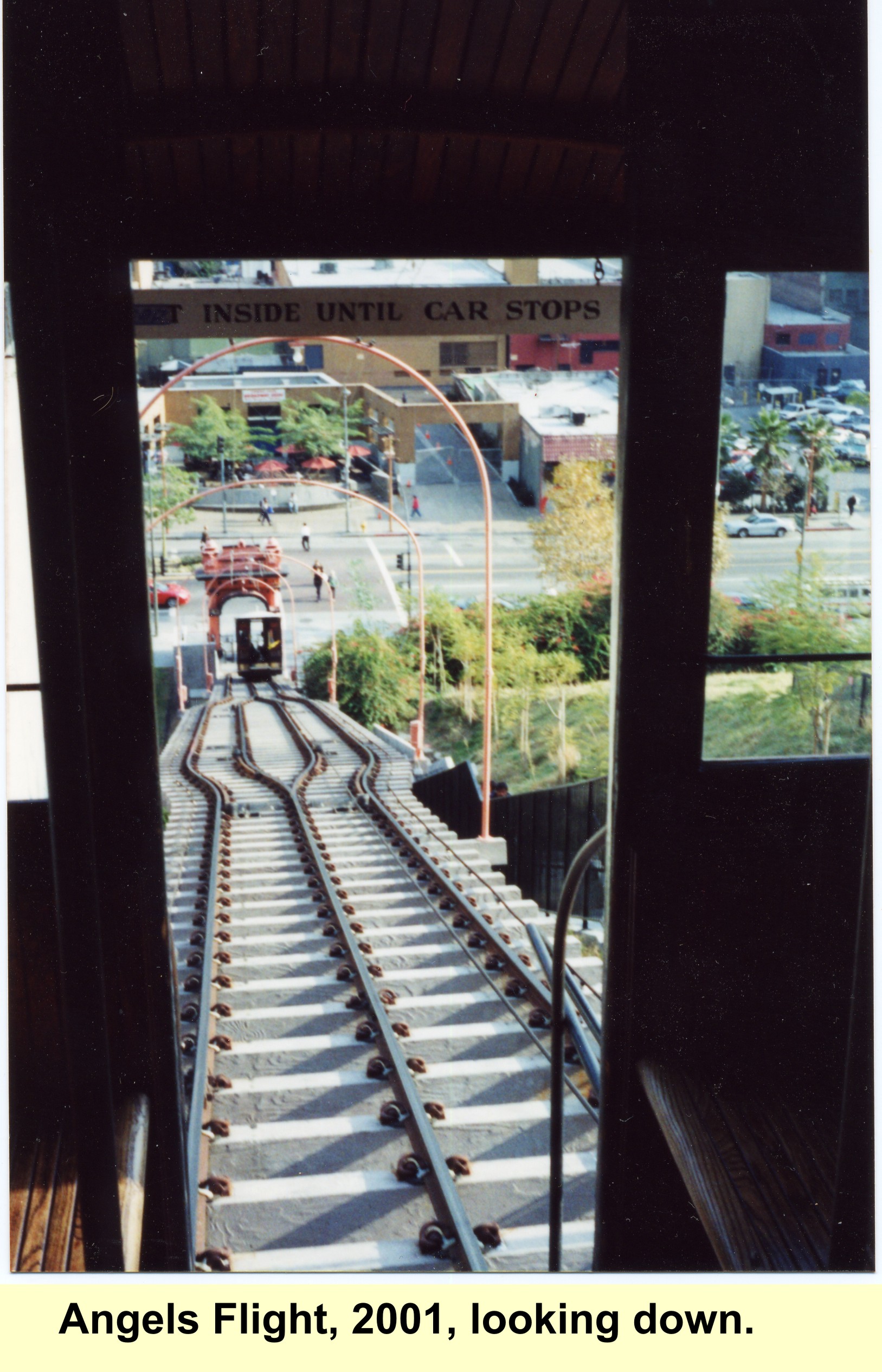
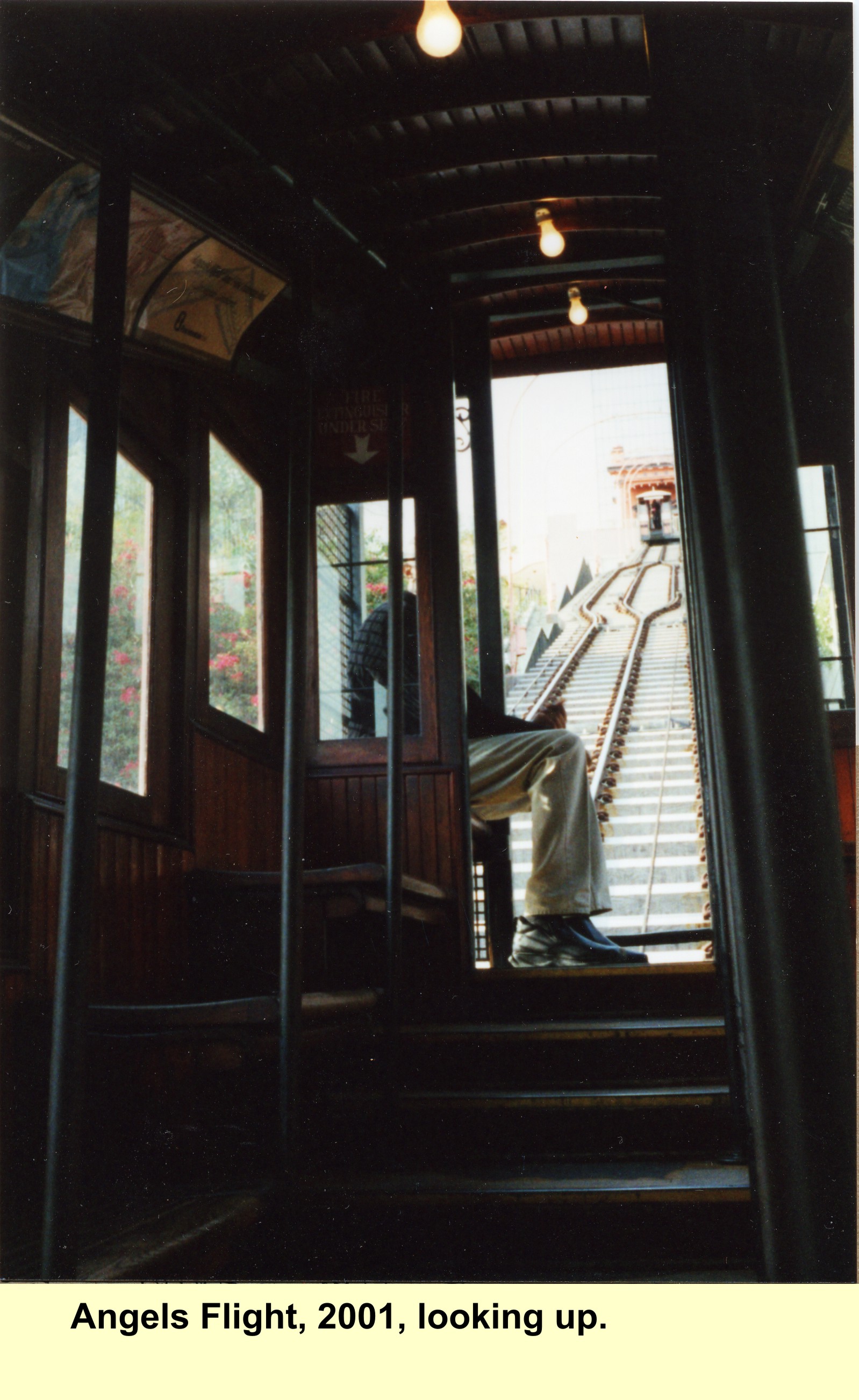
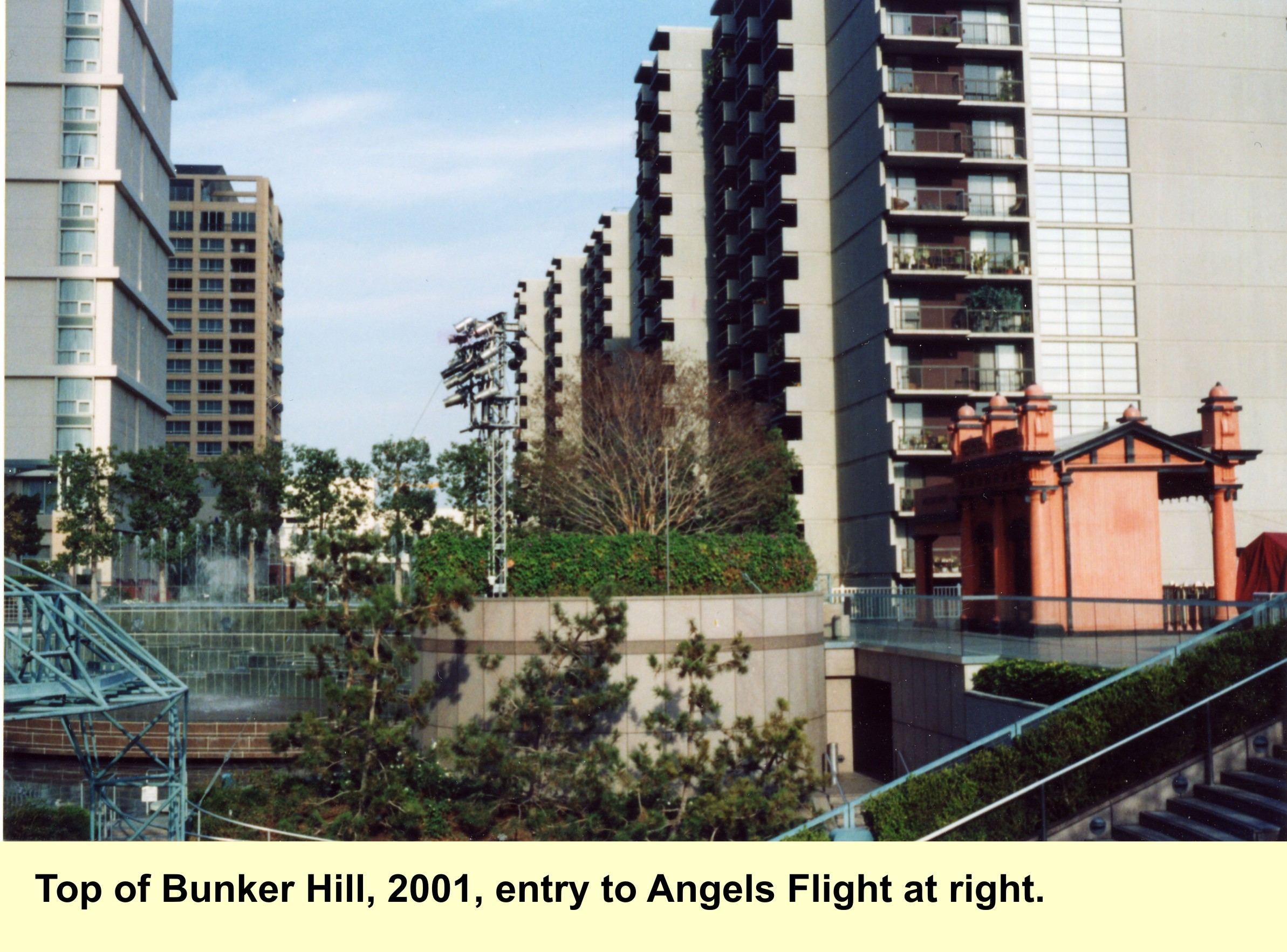
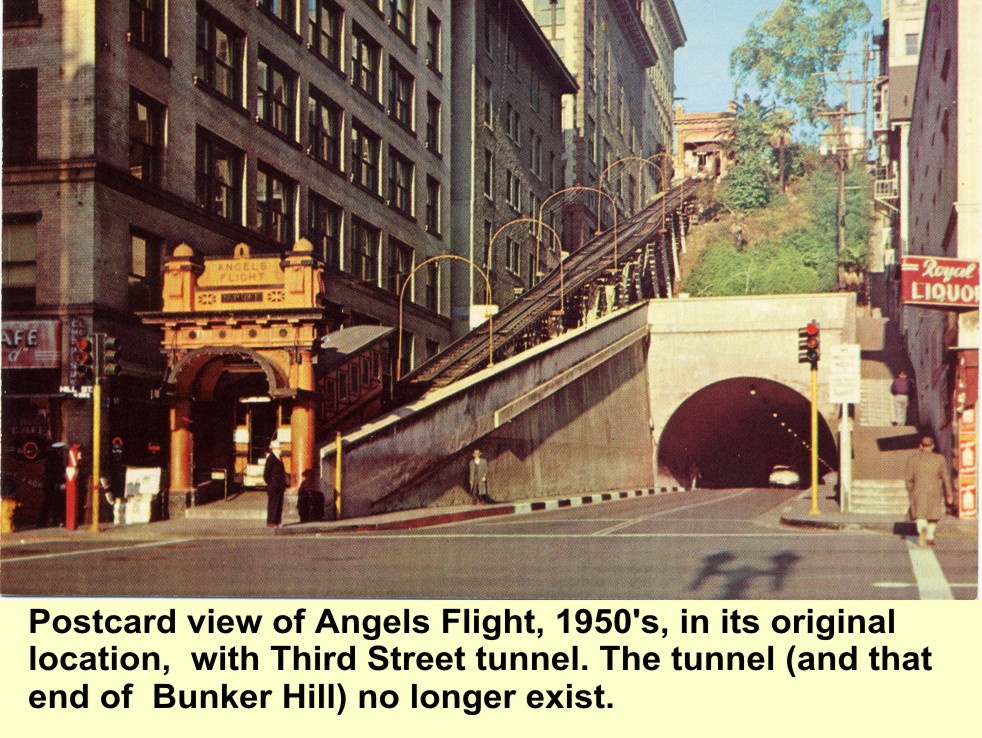
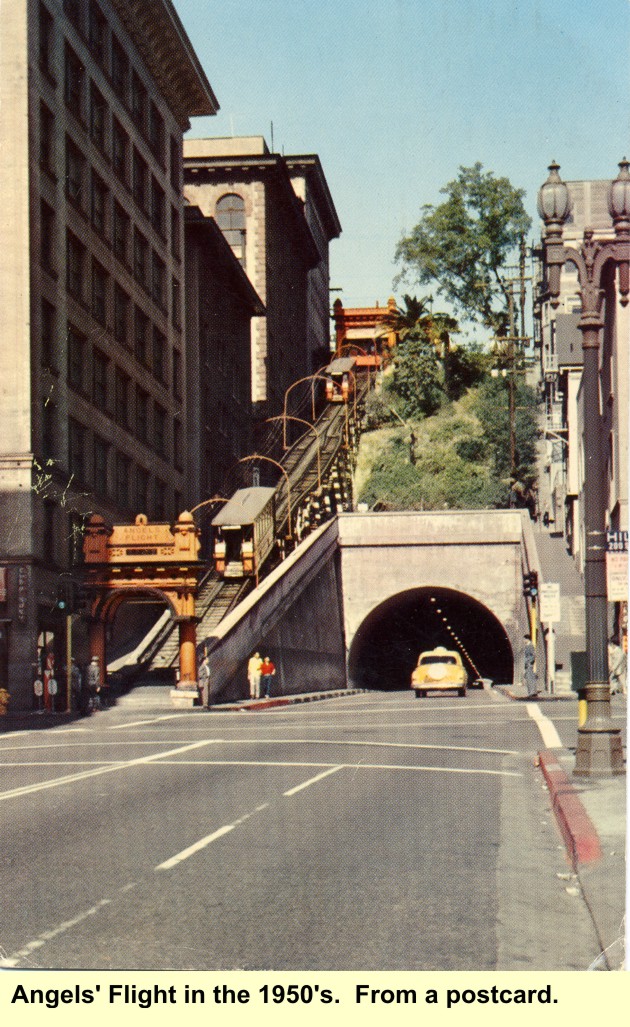
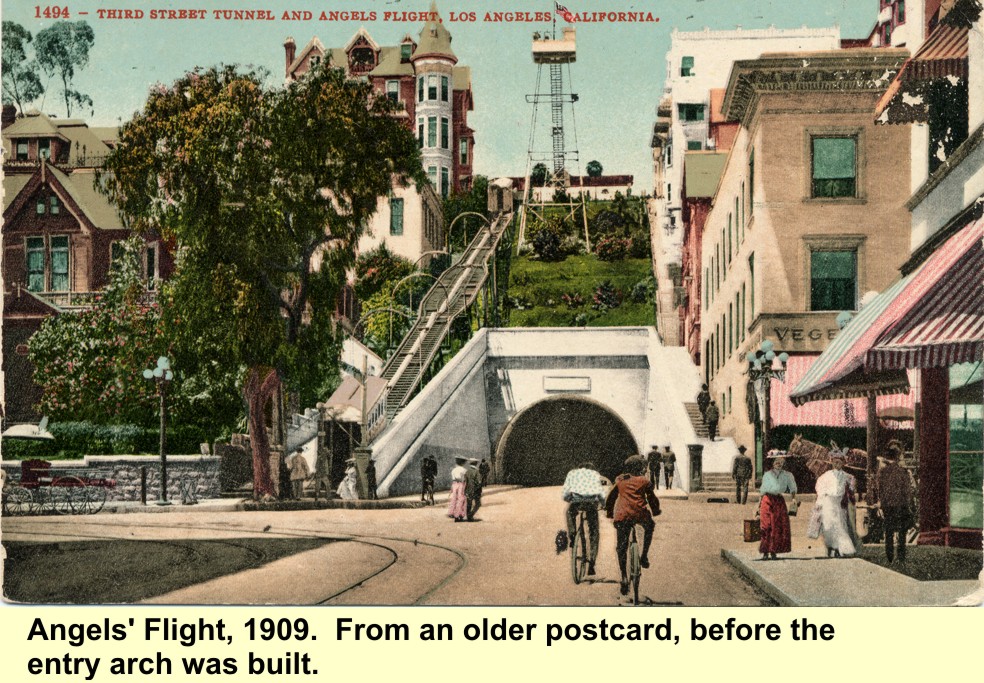



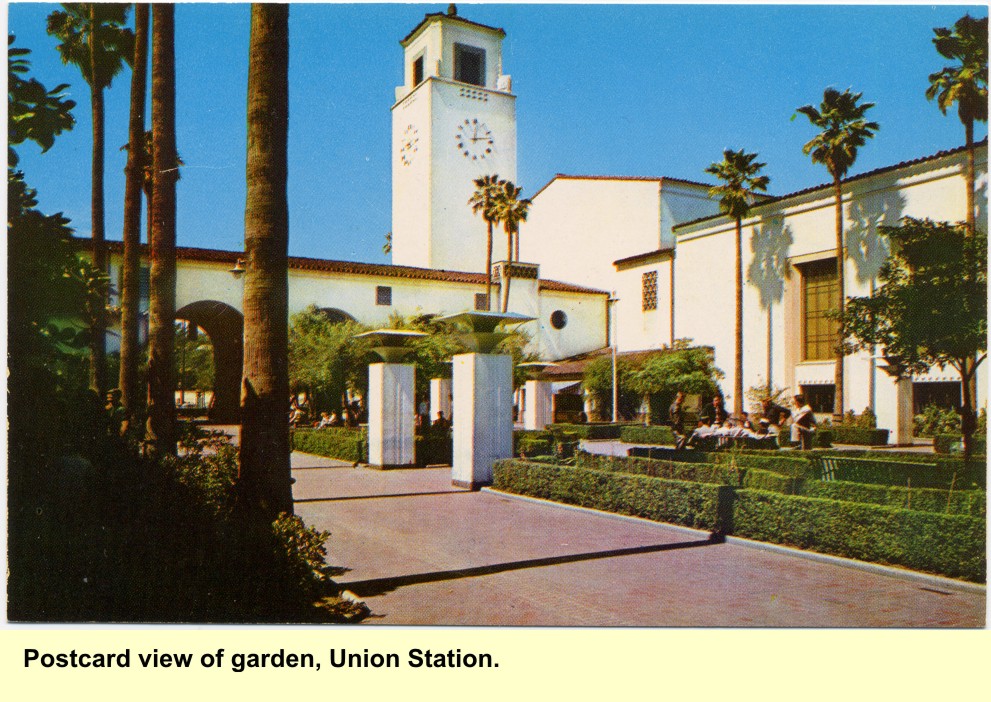
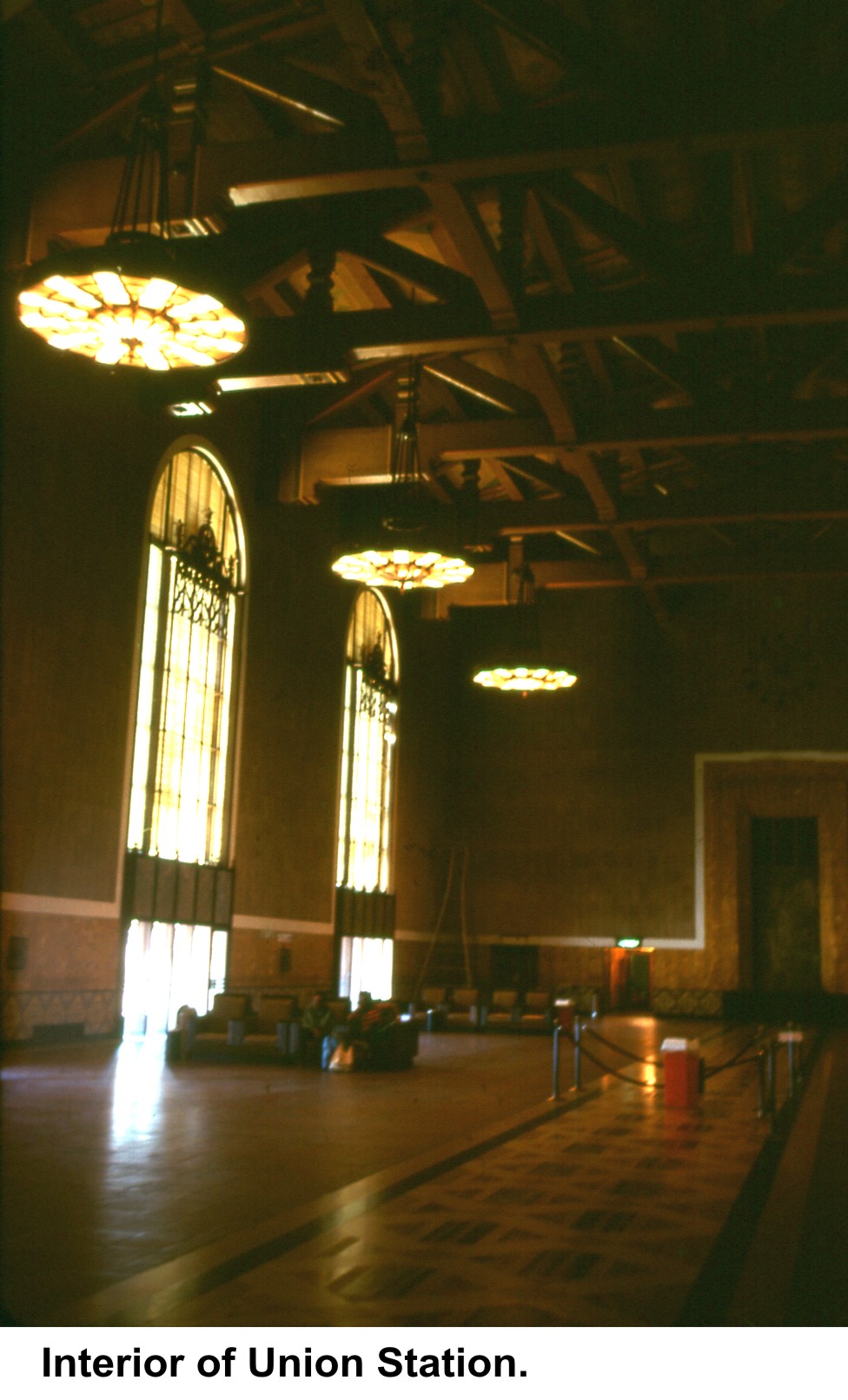


Our visit to the Train of Tomorrow
The Train of Tomorrow was a hopeful look at what the future was supposed to be. It was largely advertising for General Motors, taken on tour all over the country in 1947-1949. It visited Los Angeles just before USC was to play Michigan in the Rose Bowl, so when it was in L.A. it was parked on Exposition Boulevard right next to the USC campus, when it was not taking celebrities and football players on joy rides. It was on Exposition Boulevard that we visited the train and got the picture below.
The train was intended to show off GM's new engine, an EMD E7A, and the new dome cars, but today only the end car, an observation/lounge car called "Moon Glow," rediscovered in an Idaho scrap yard, survives, awaiting restoration in Ogden, Utah at the Utah State Railroad Museum in the Ogden Union Depot.

To go to the next pages, choose the following sections:
- Click here for the second page:
- Click here for the third page:
- Click here for the fourth page:
- Click here for the fifth page:
- Click here for the sixth page:
Engineers in the Family I,
Walter Angier, civil engineer.
- Click here for the seventh page:
Engineers in the Family II,
Philip Angier, civil engineer.
- Click here for the eighth page: Engineers in the Family III, Alexander Lodyguine, Russian (and American) inventor.
